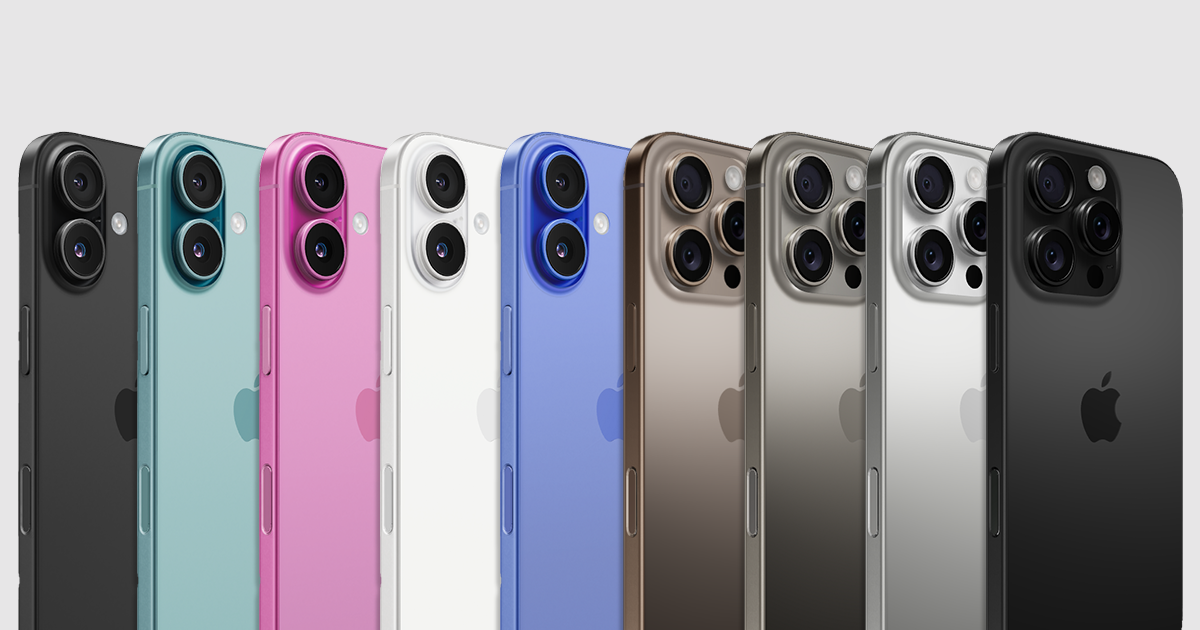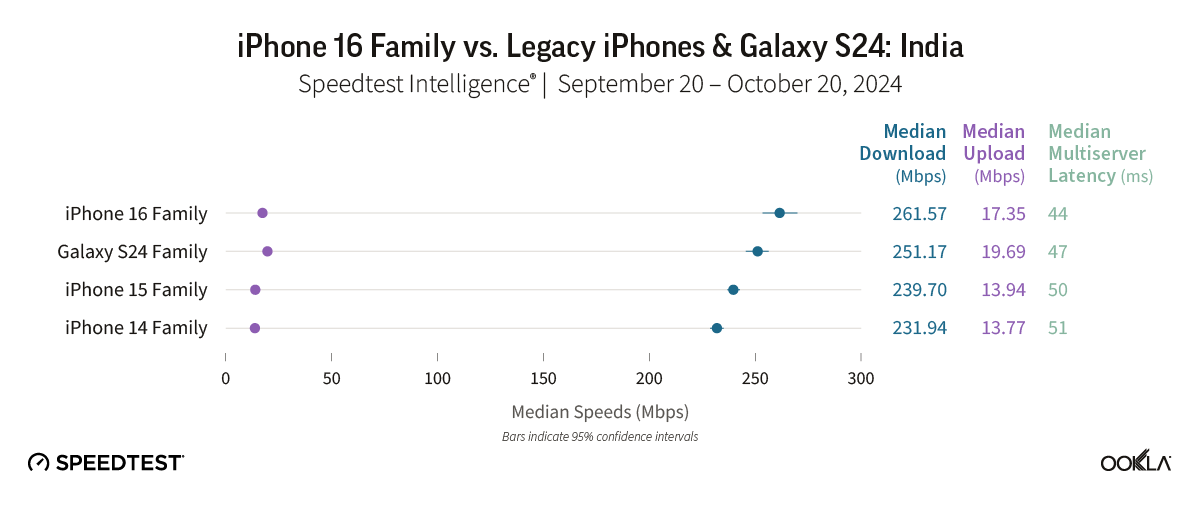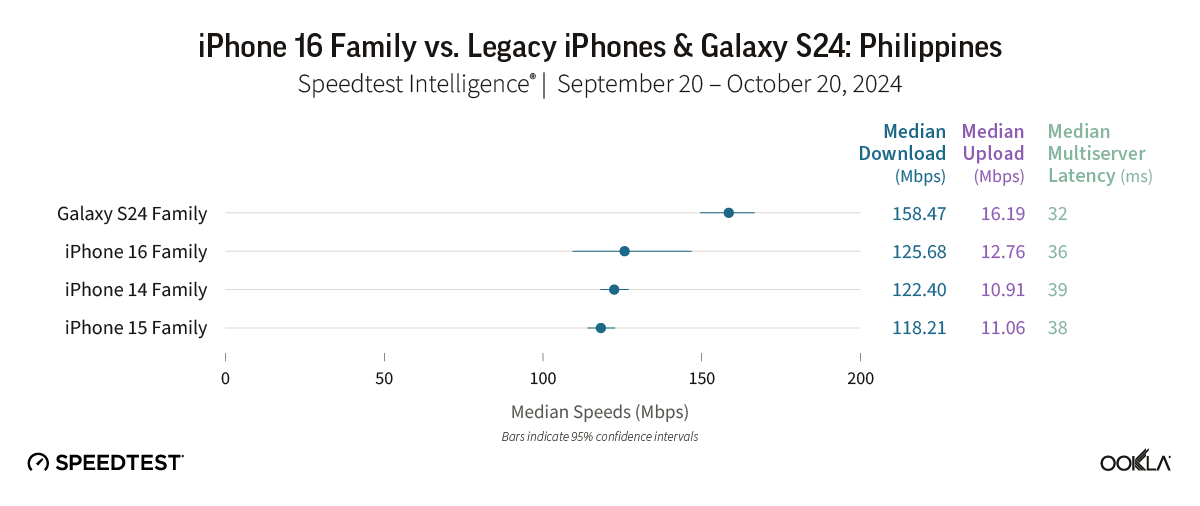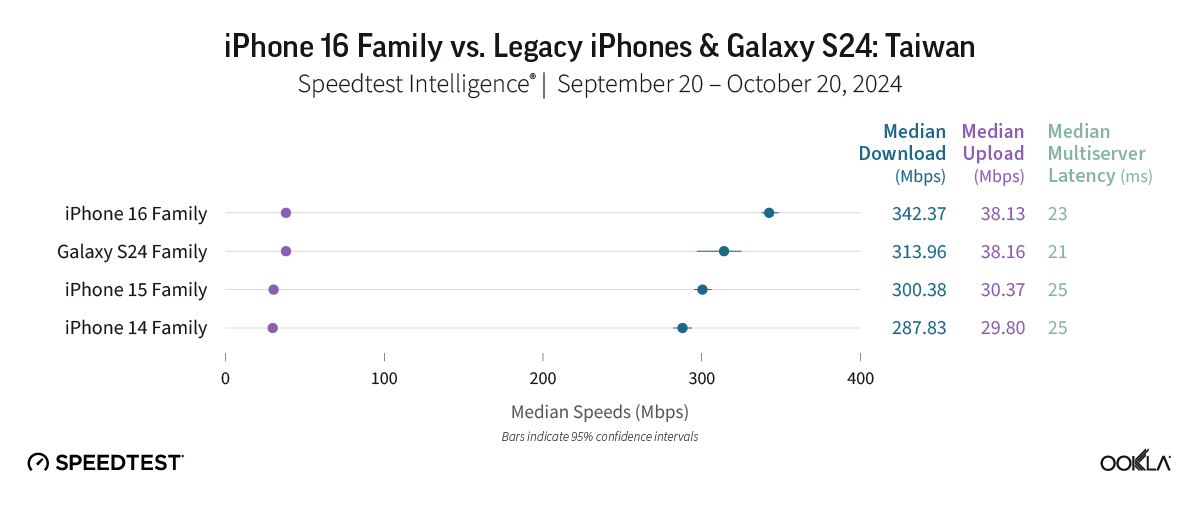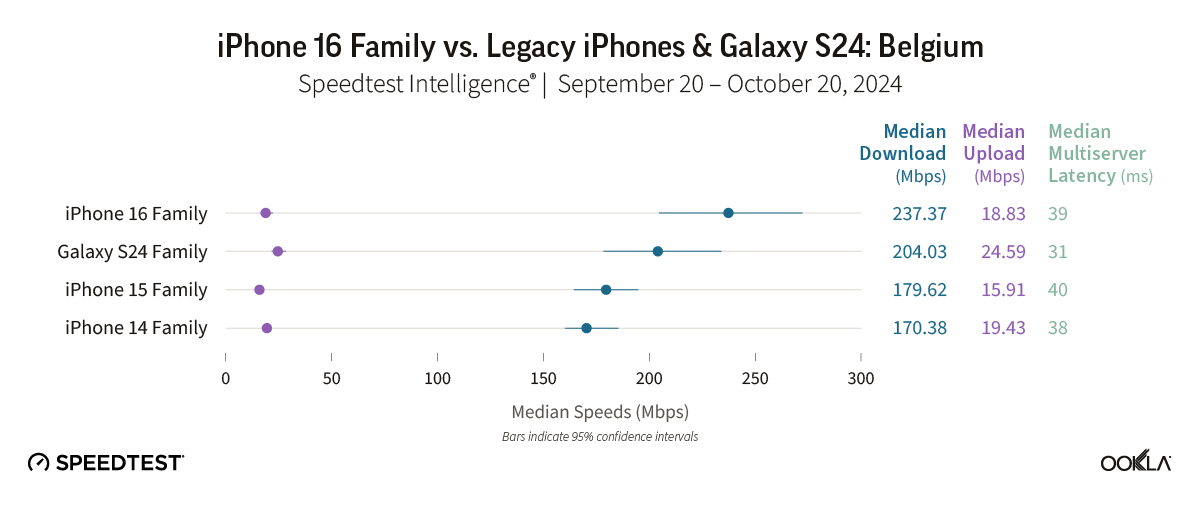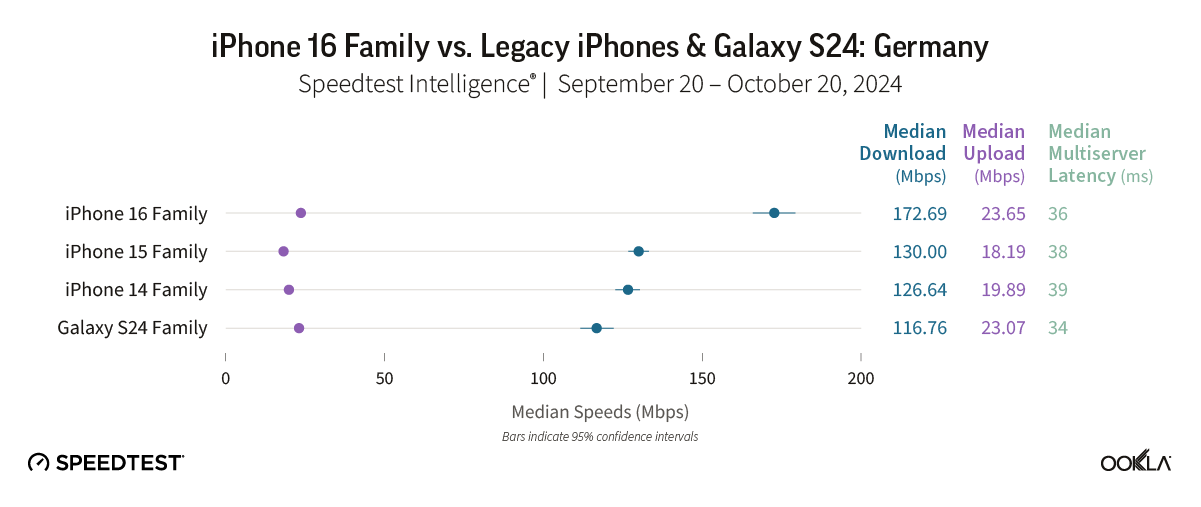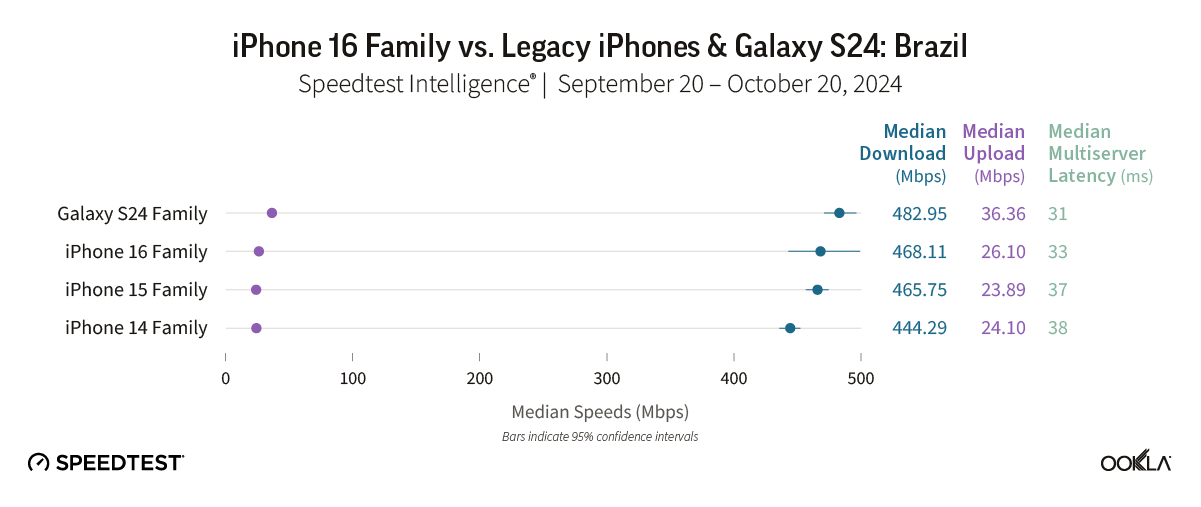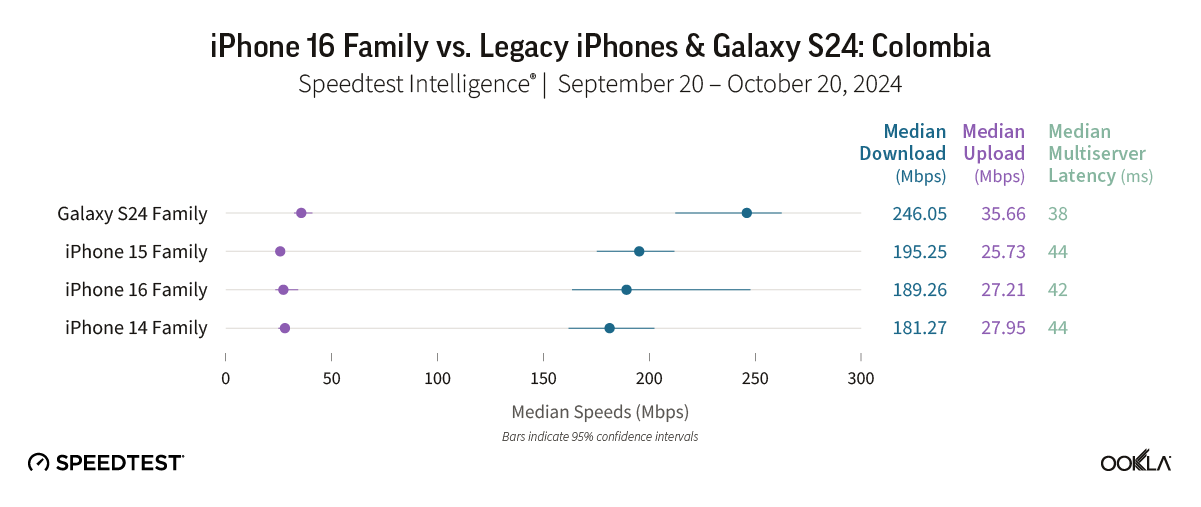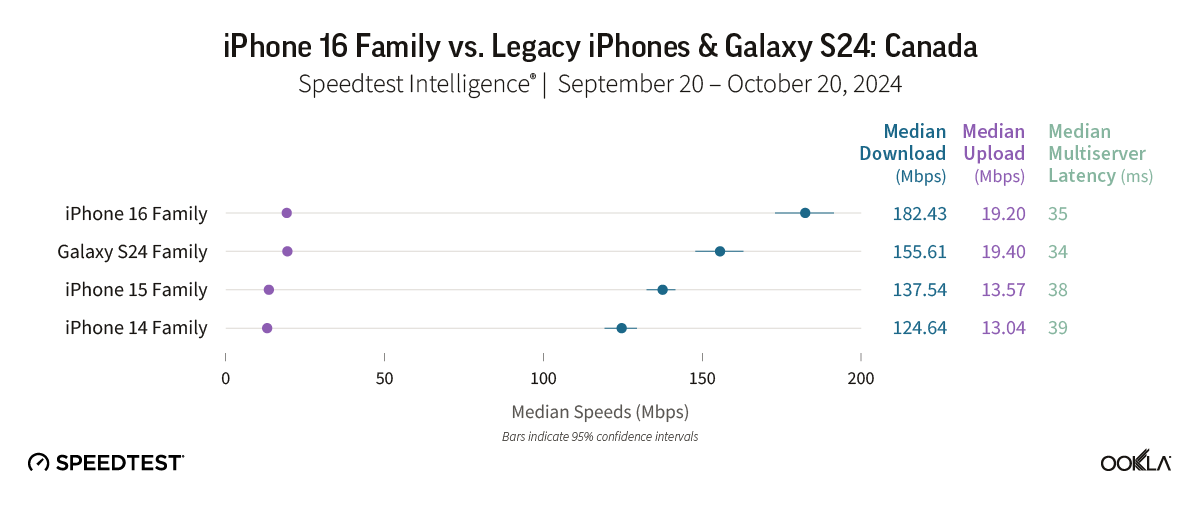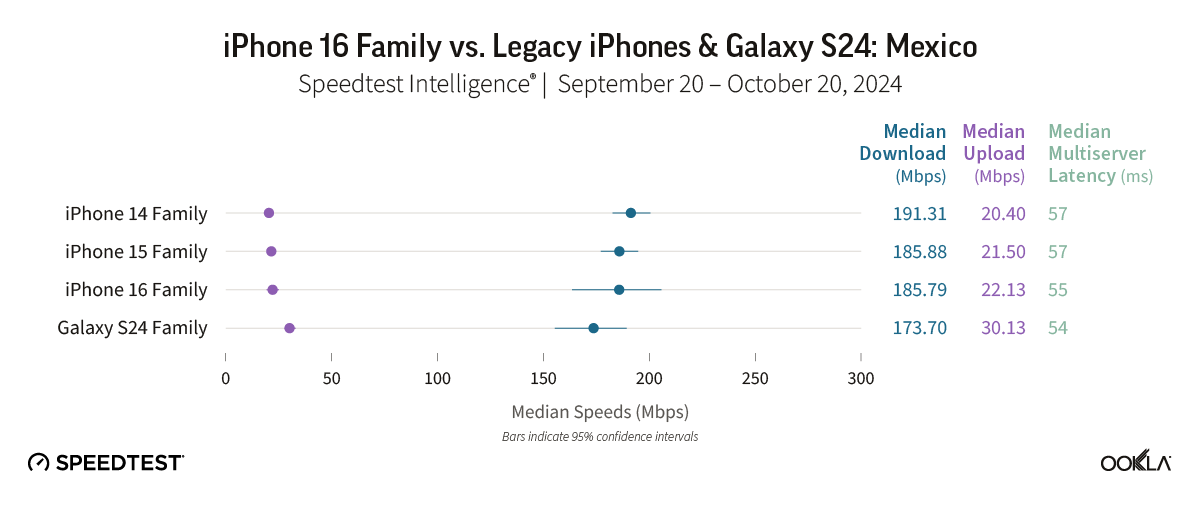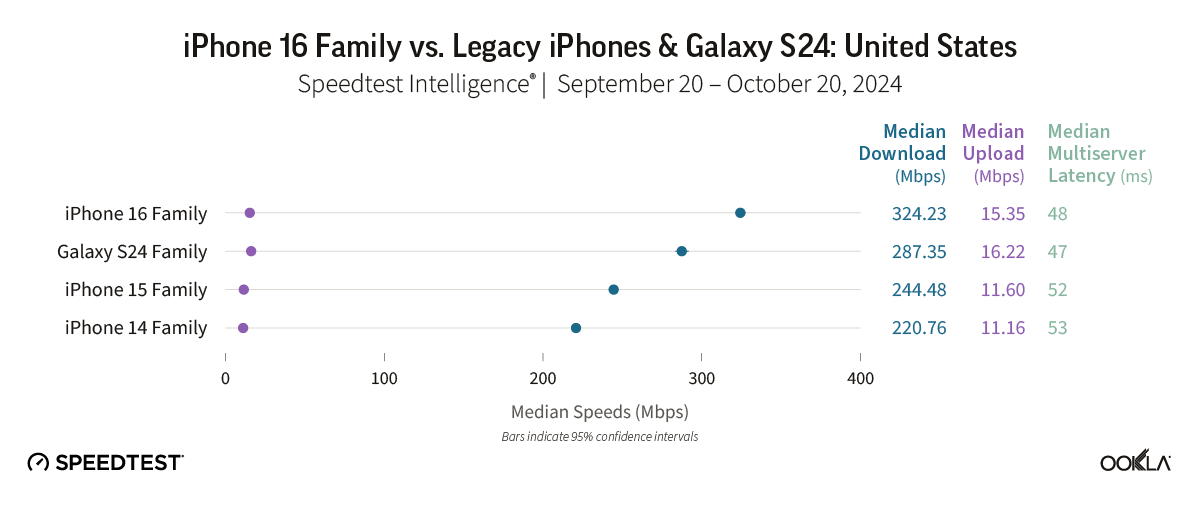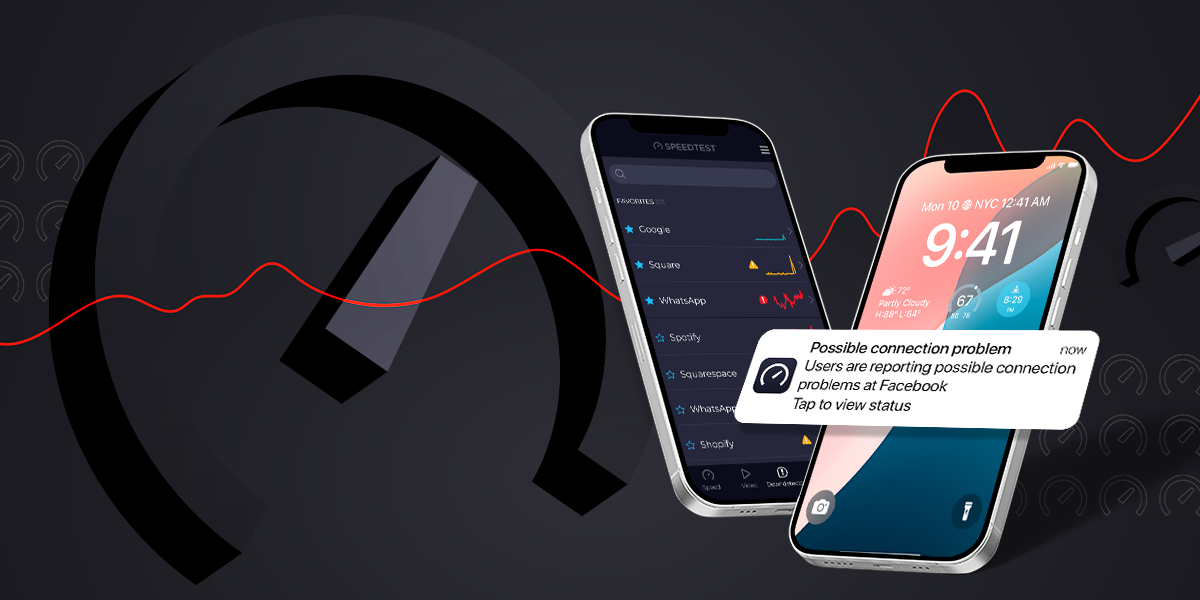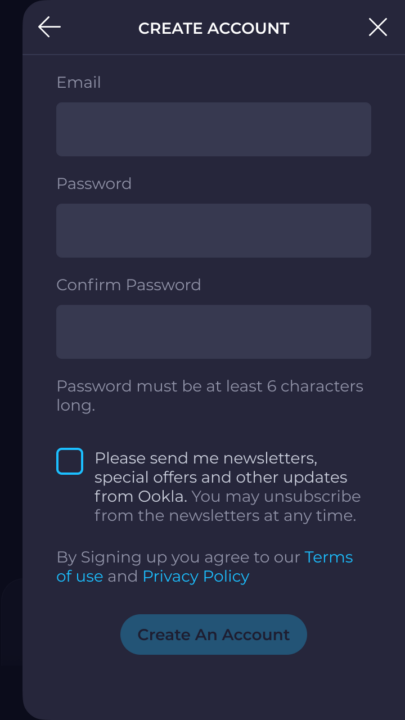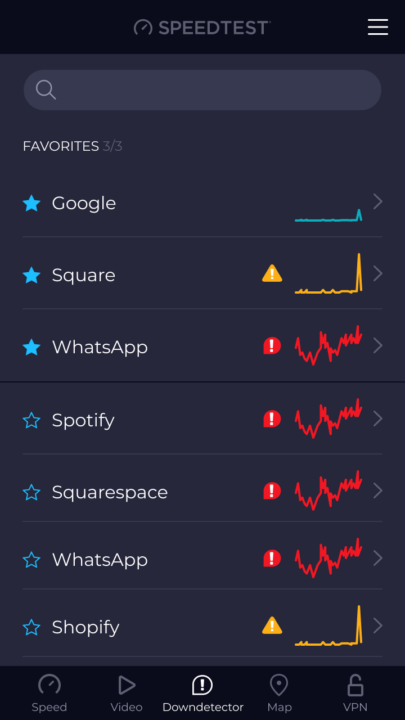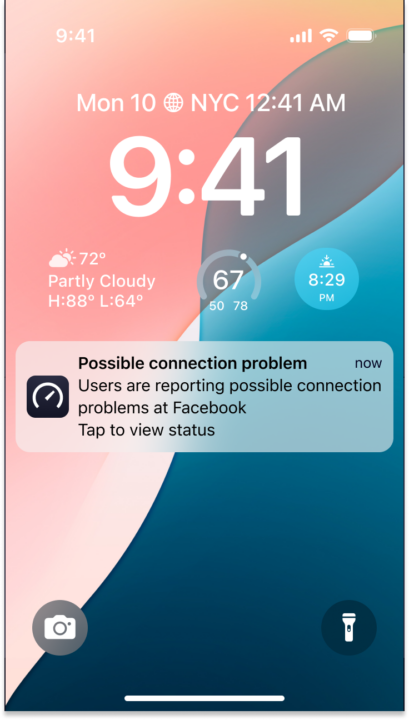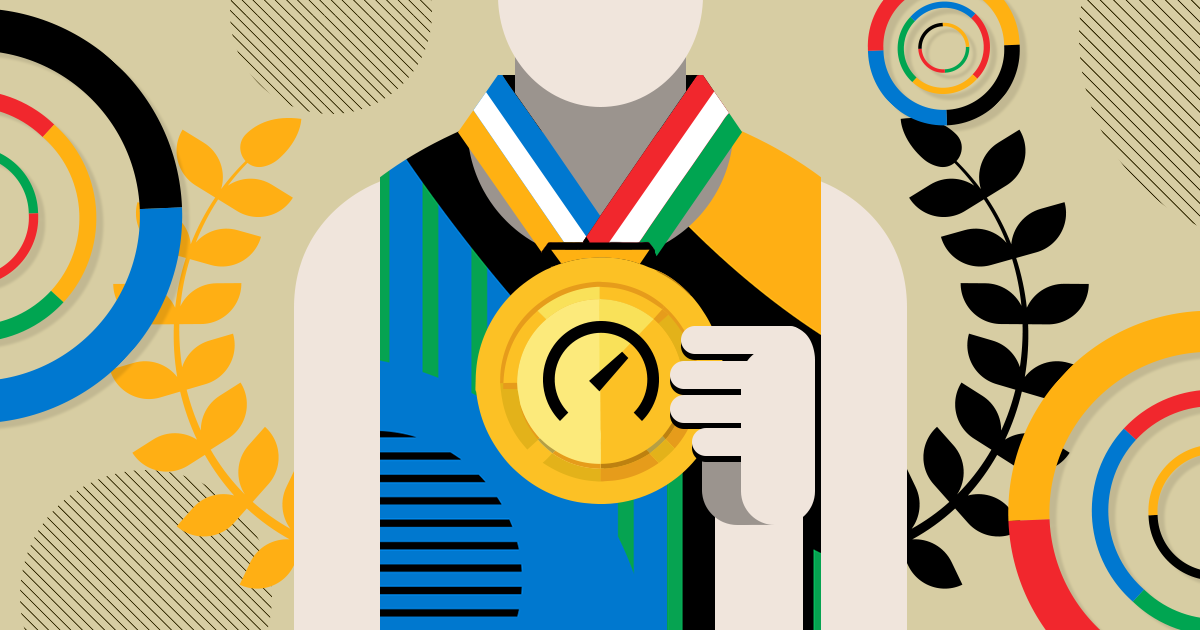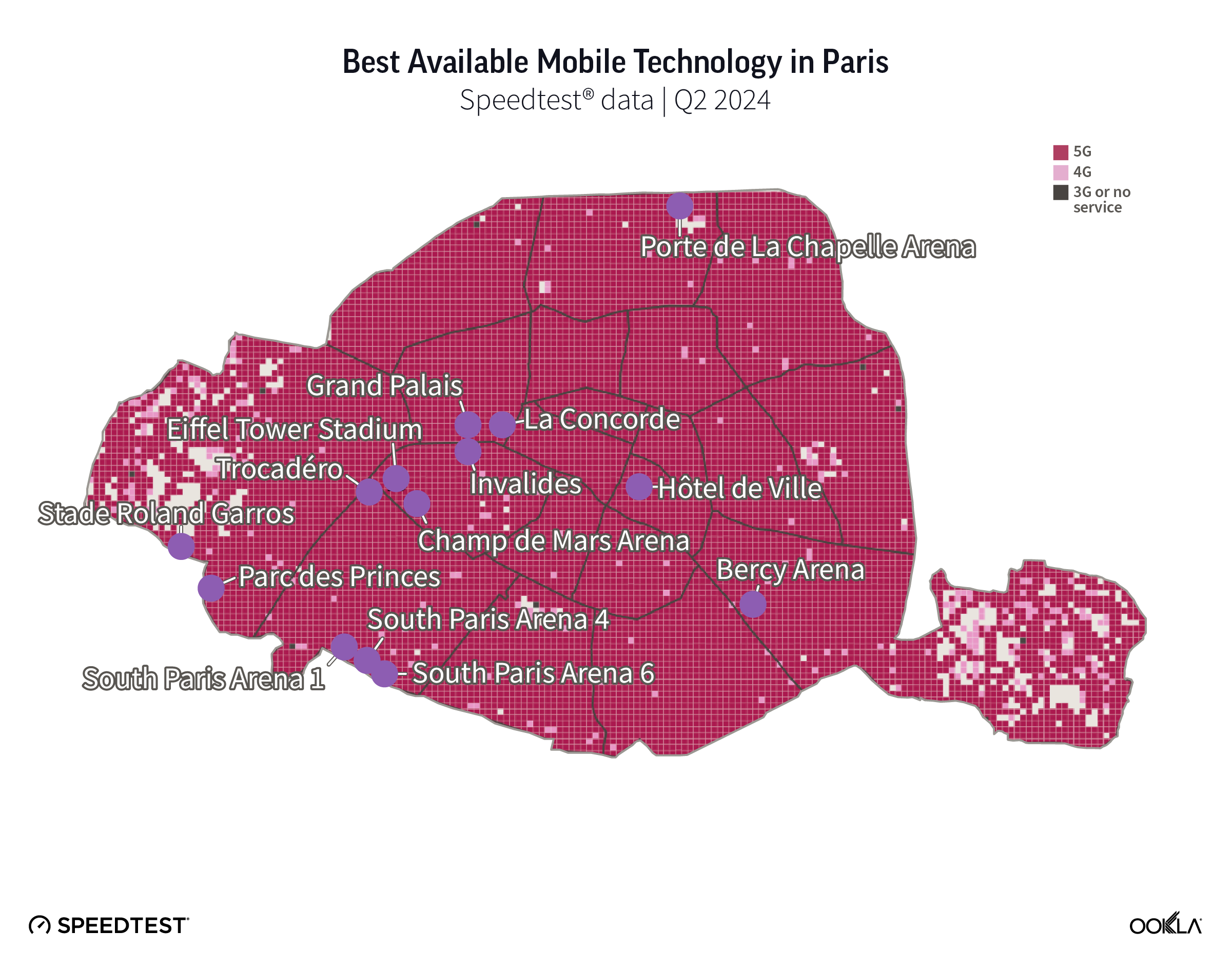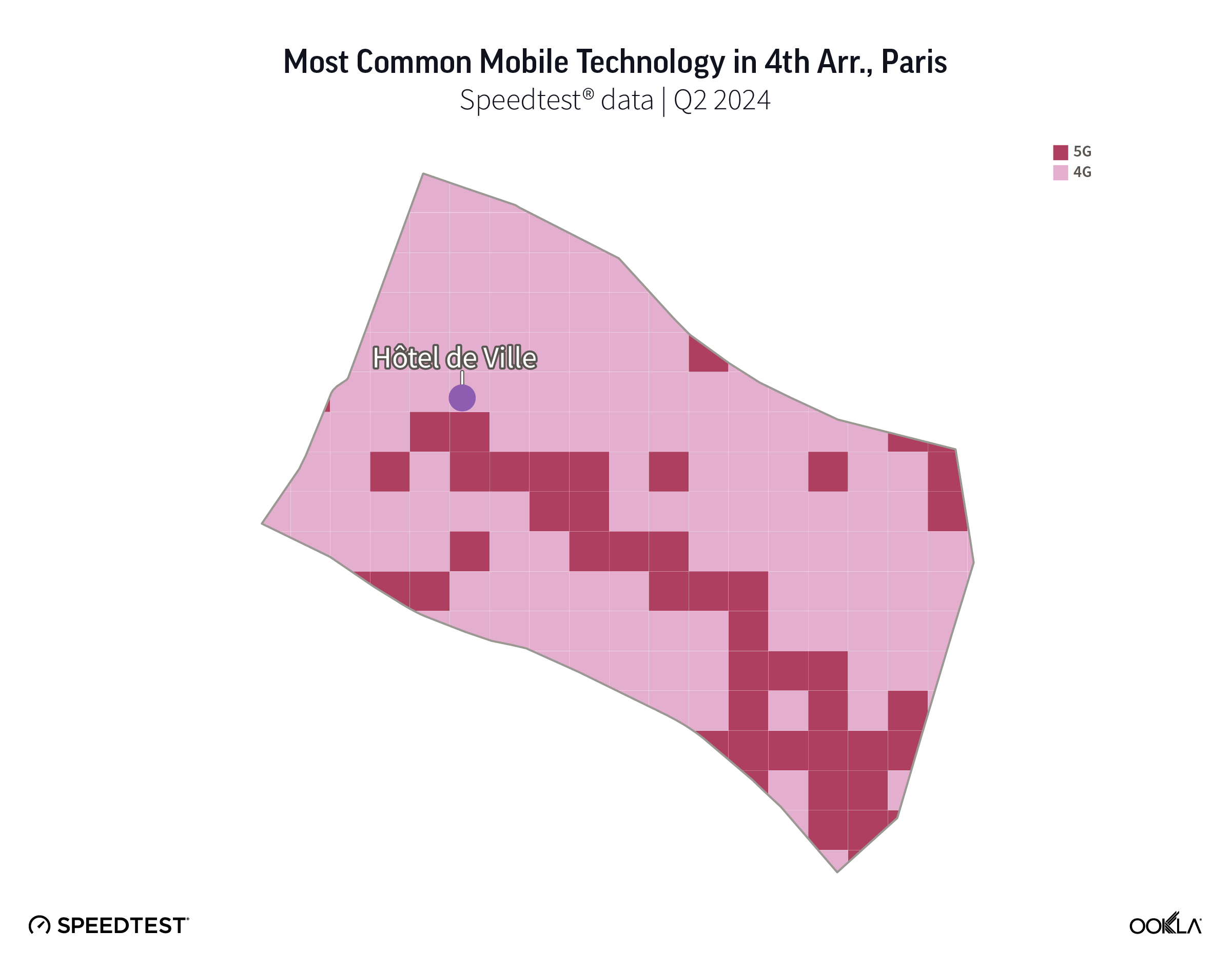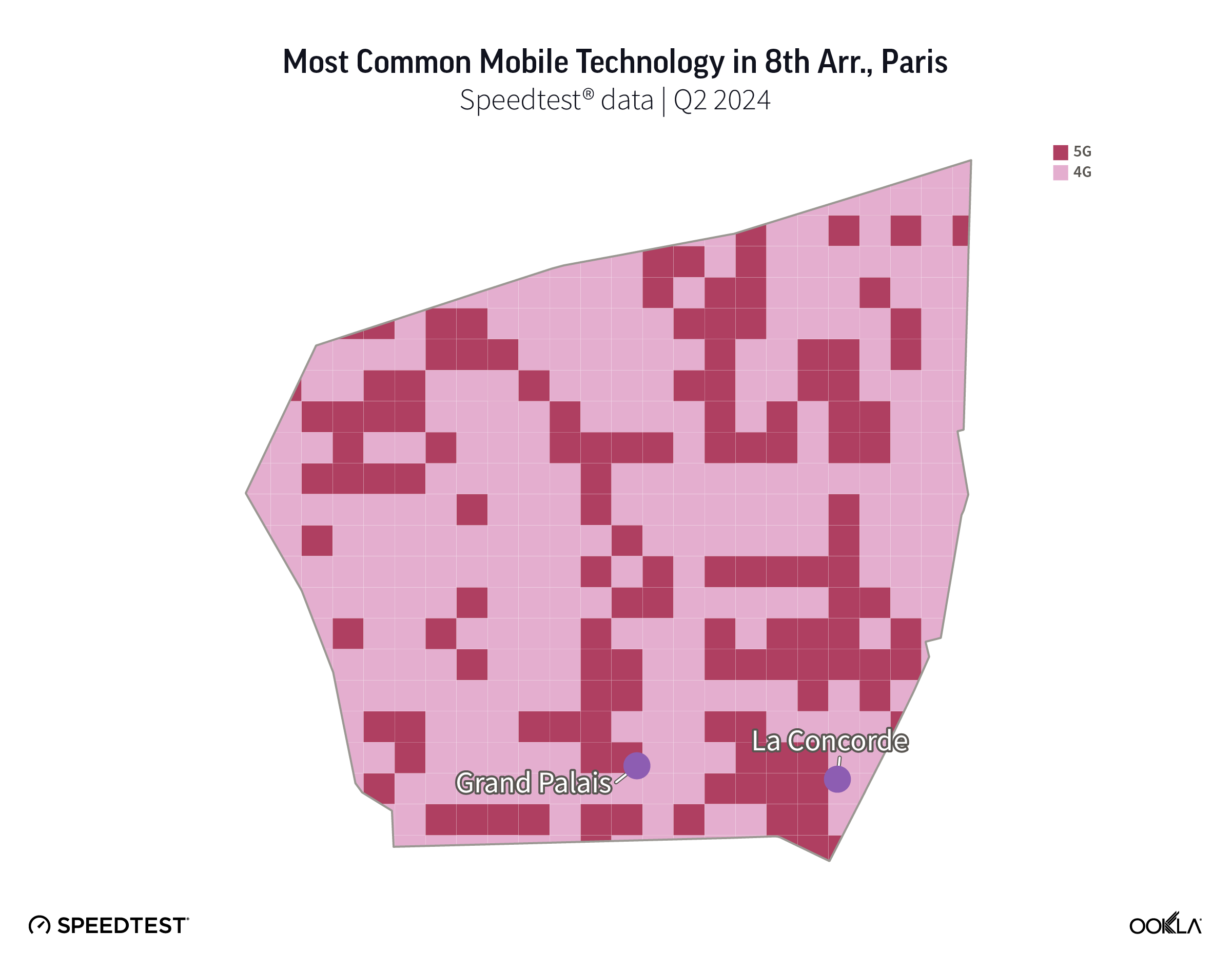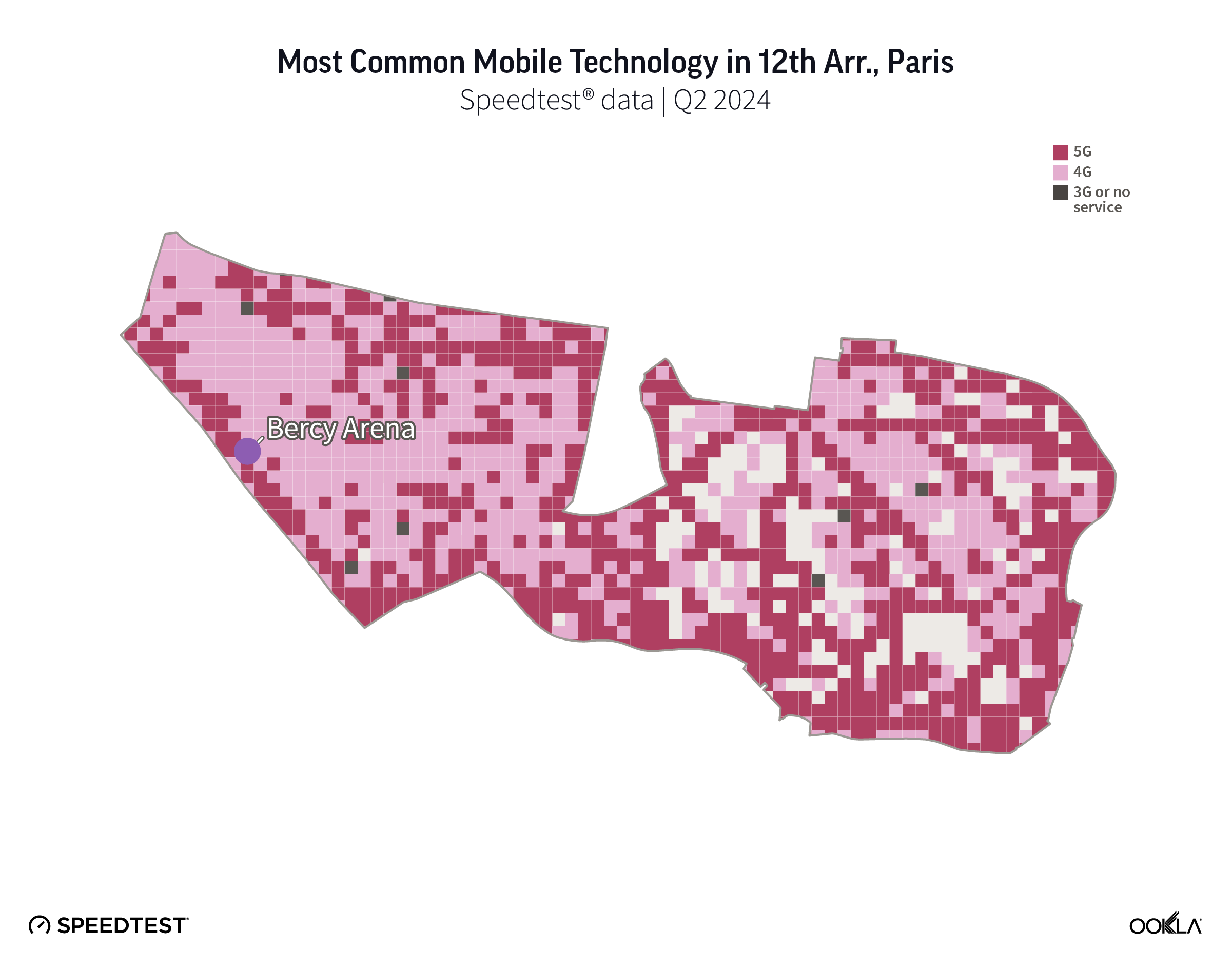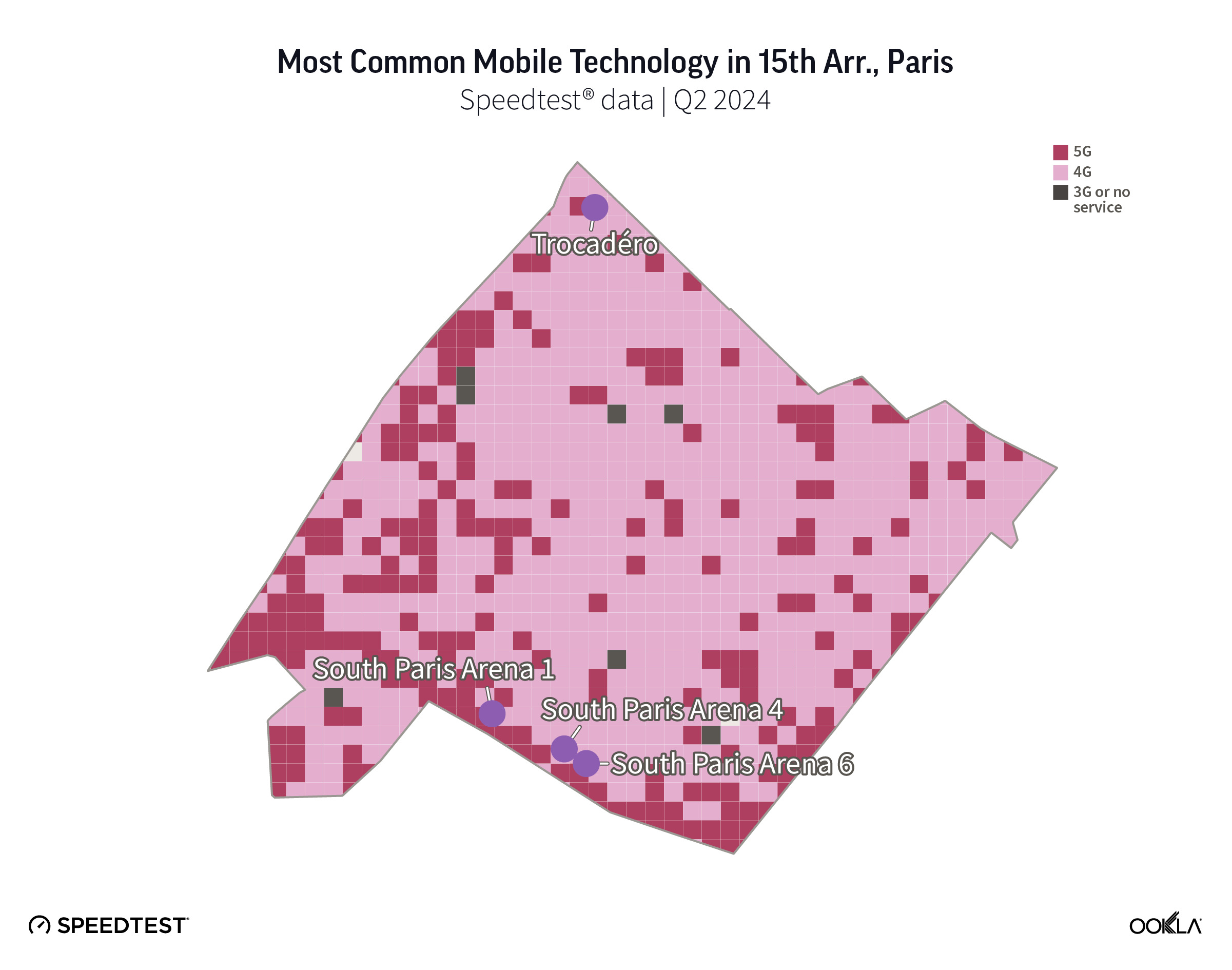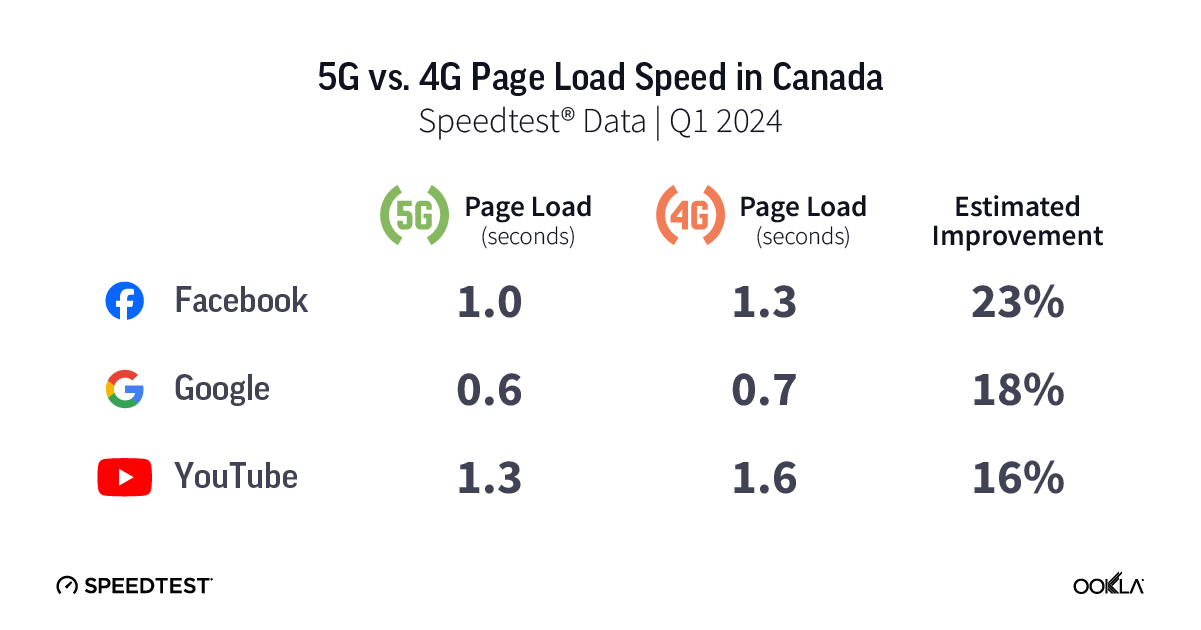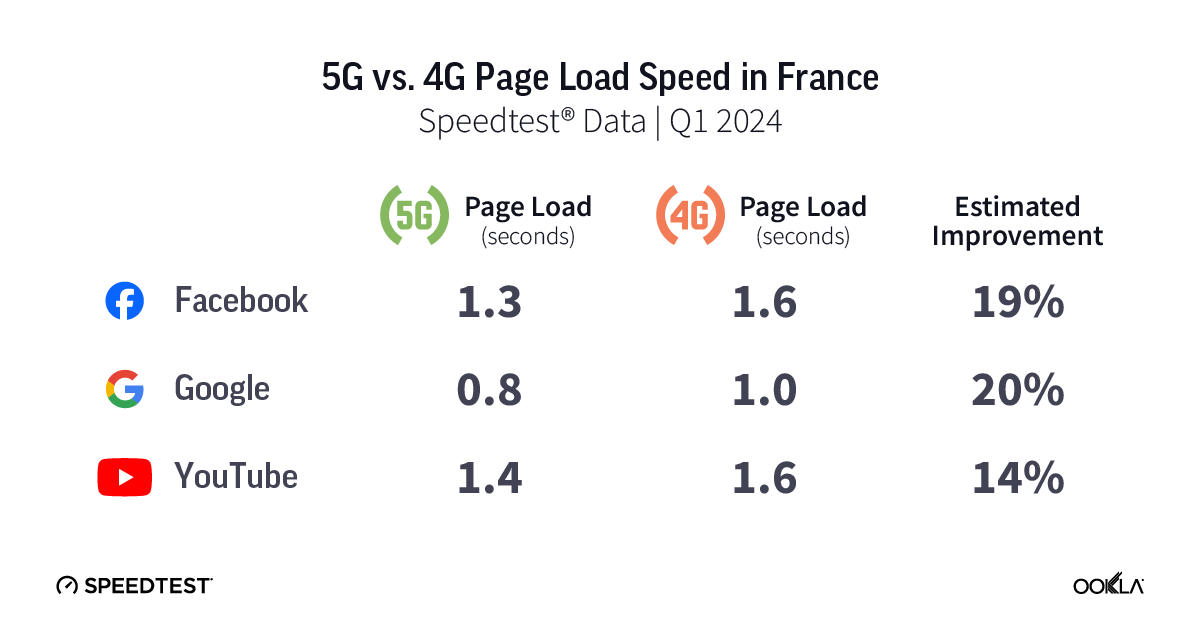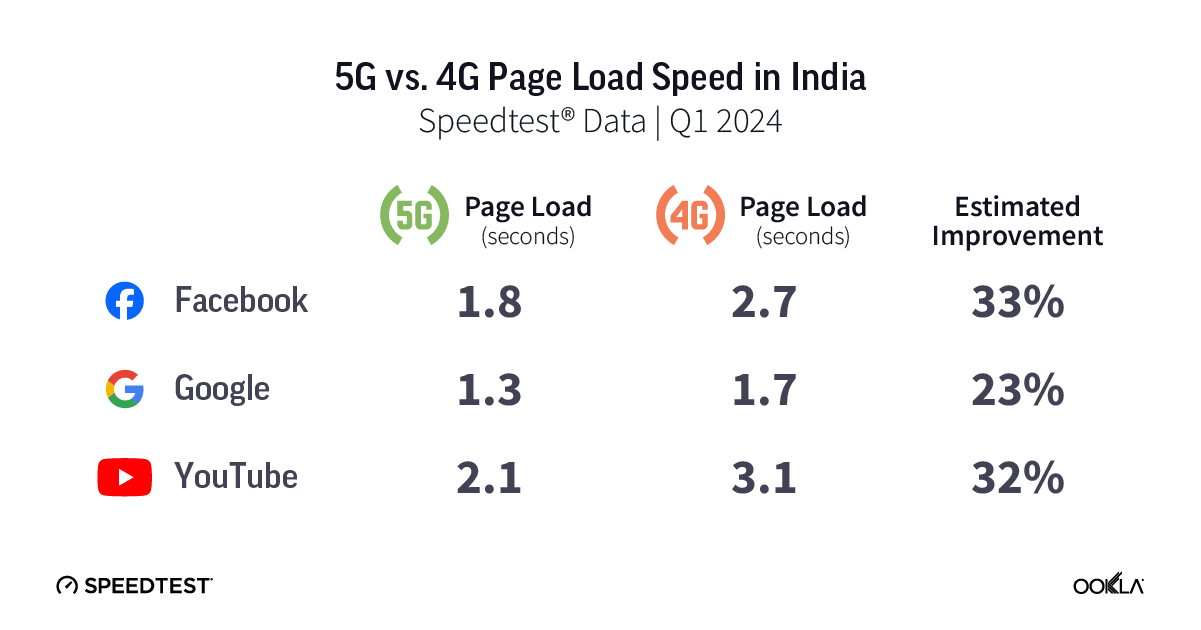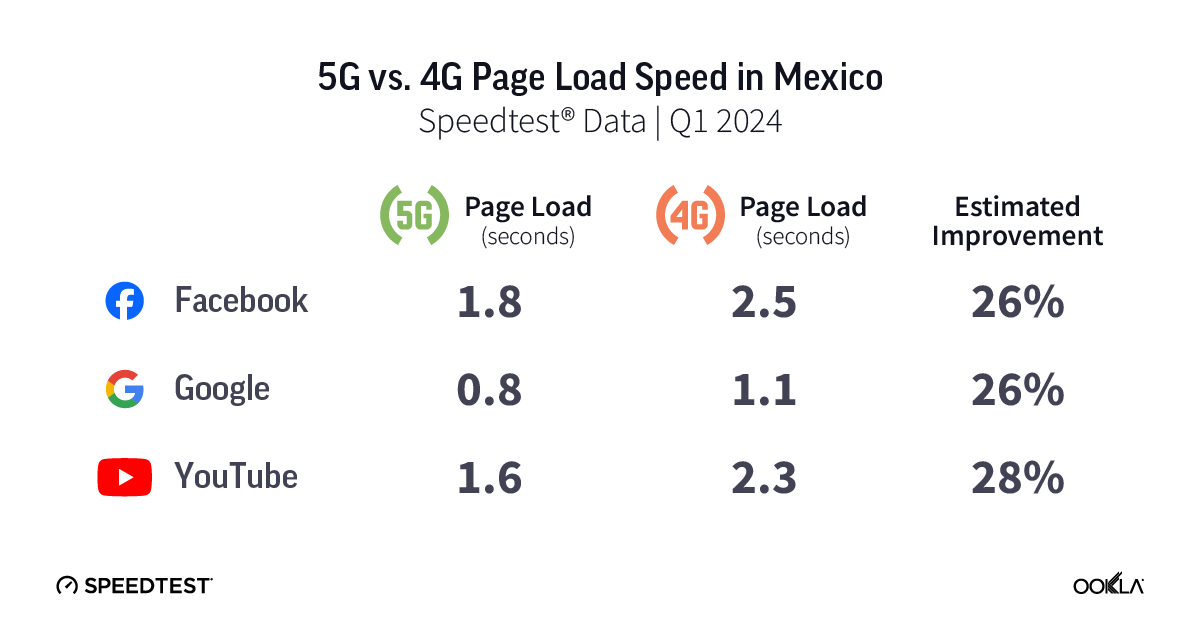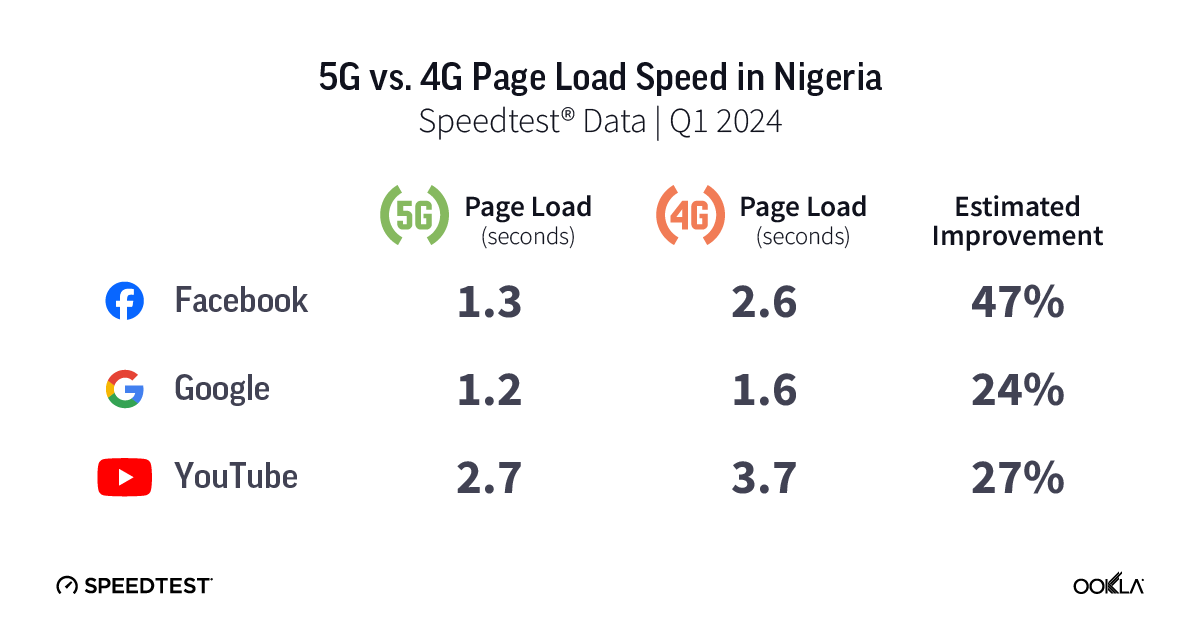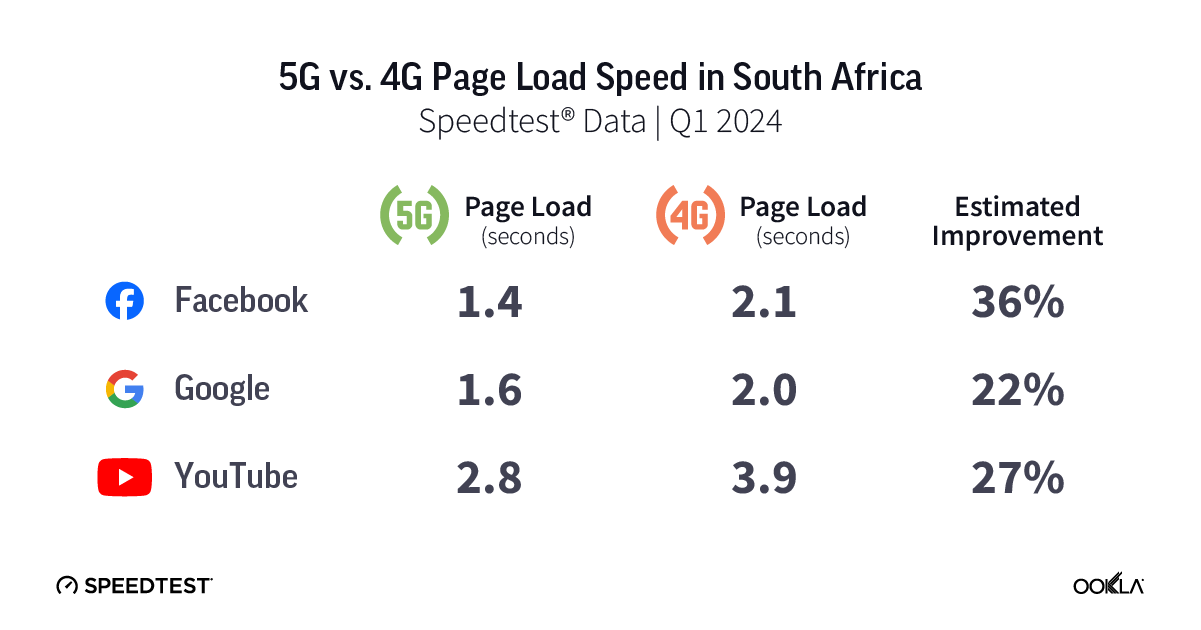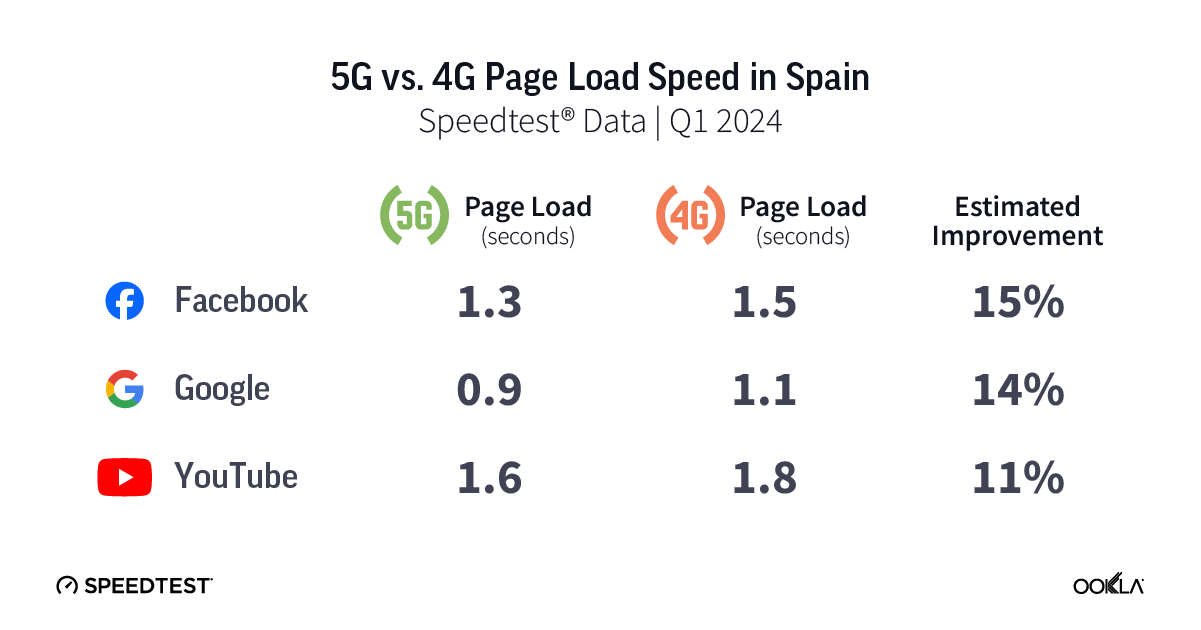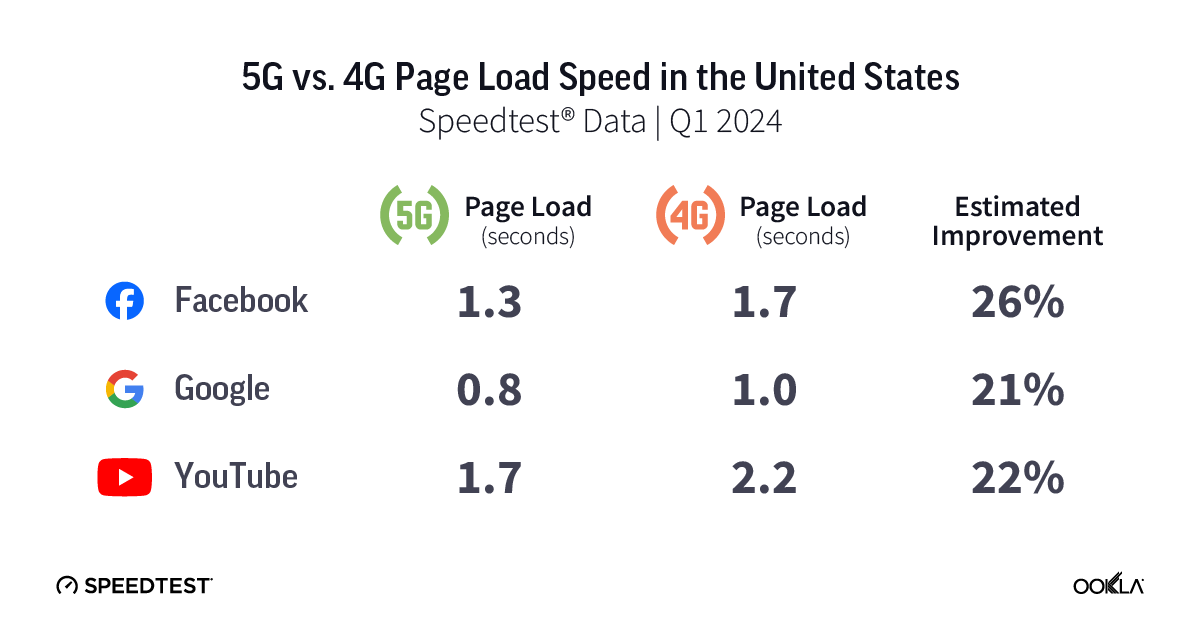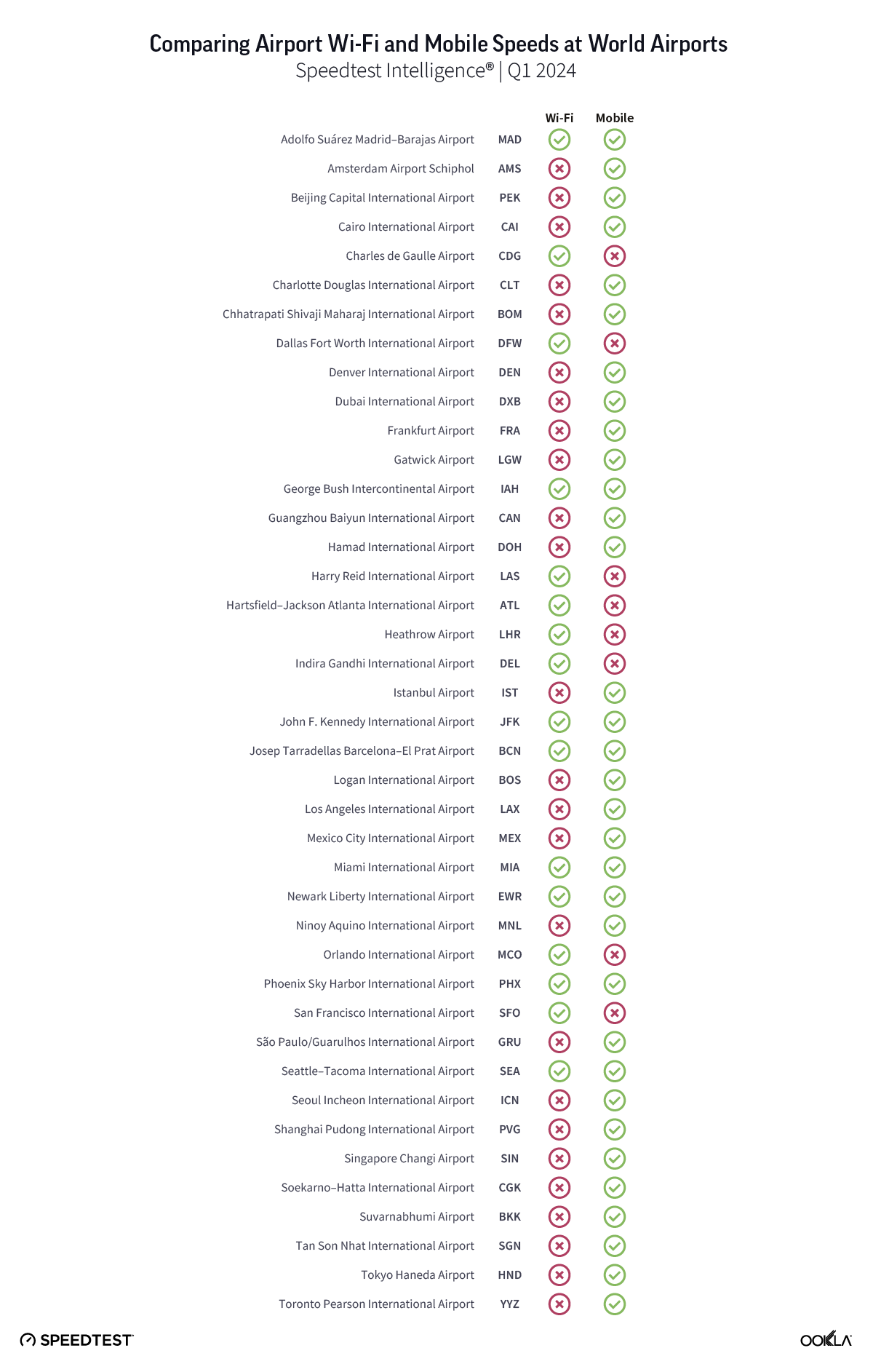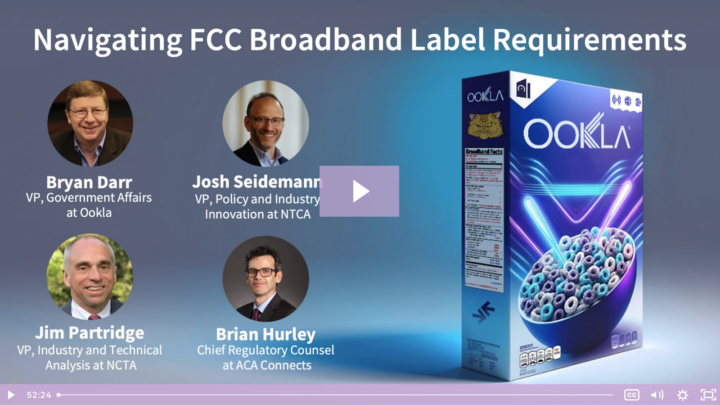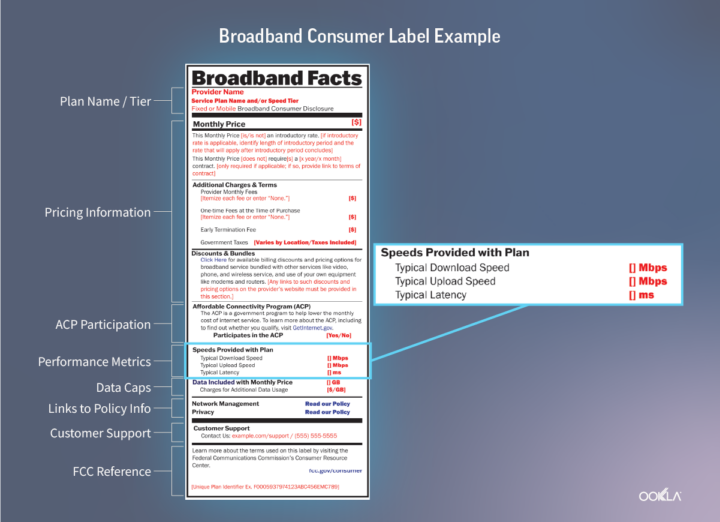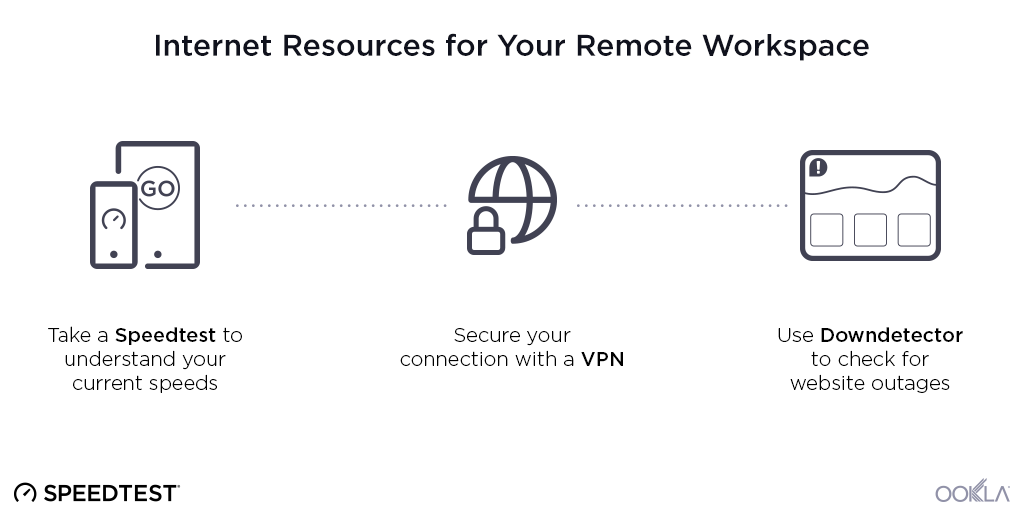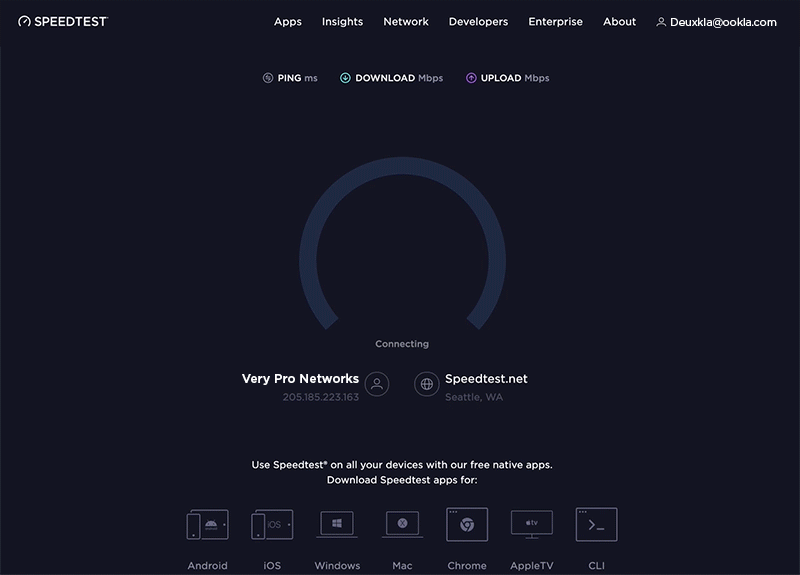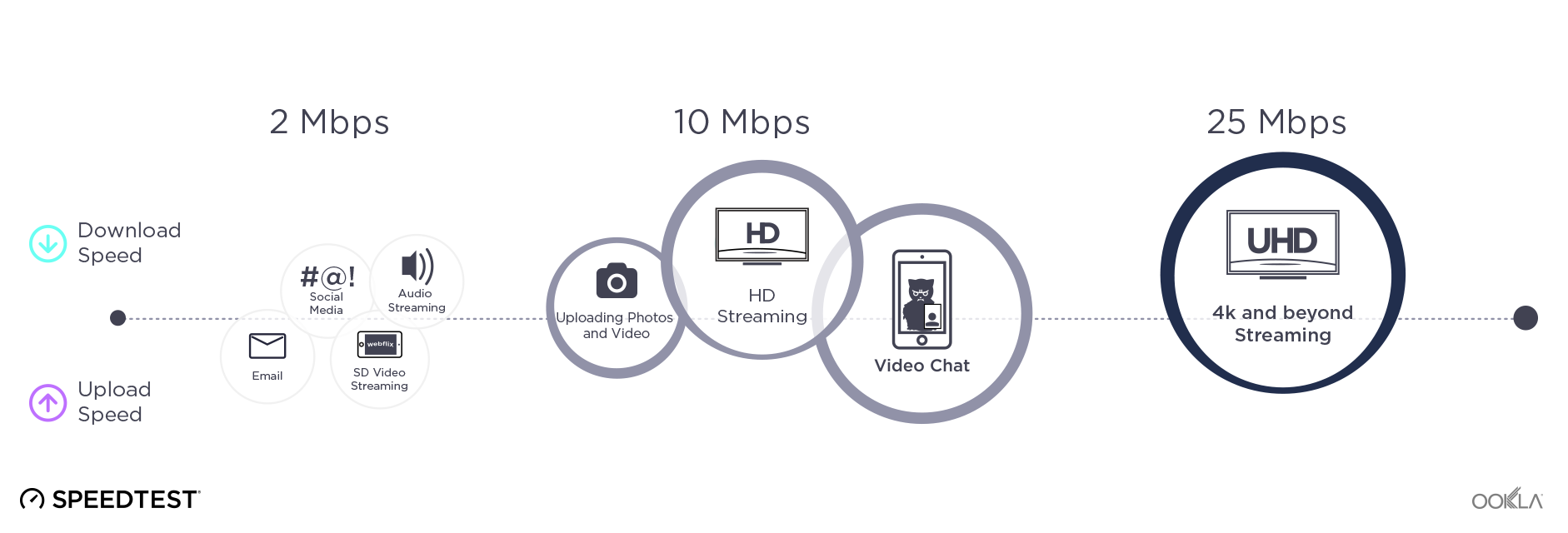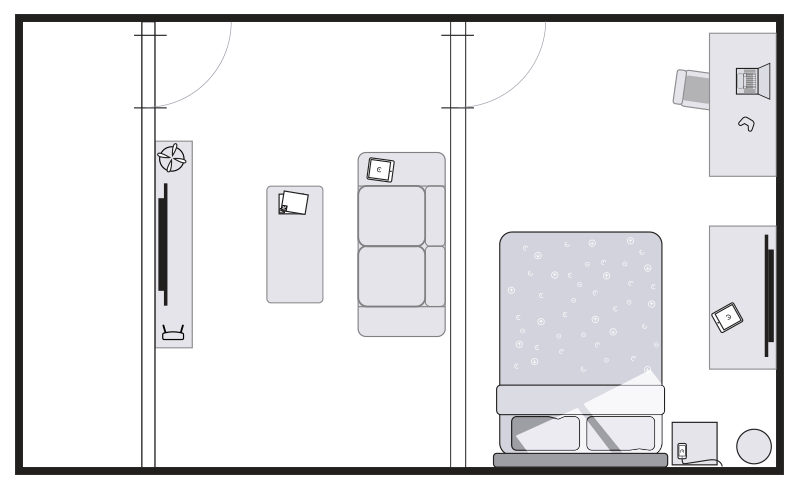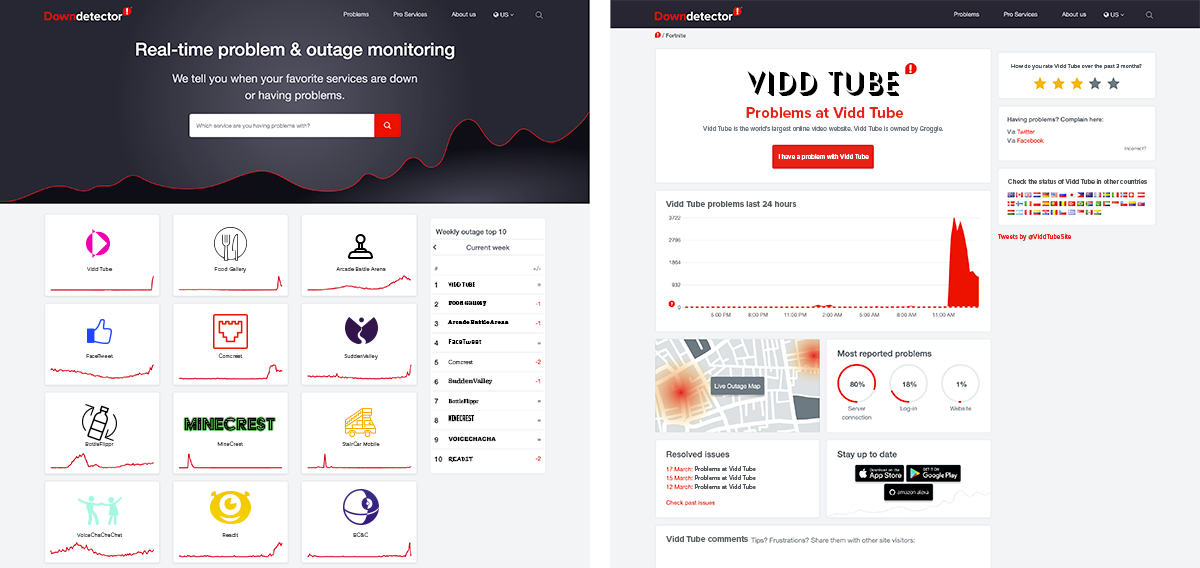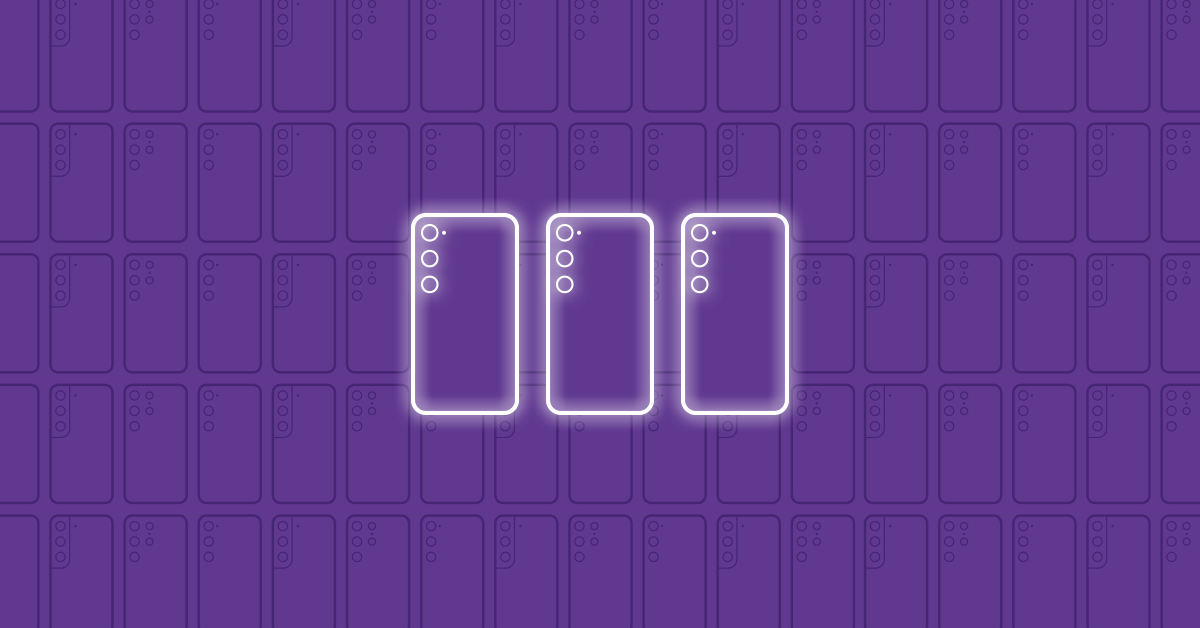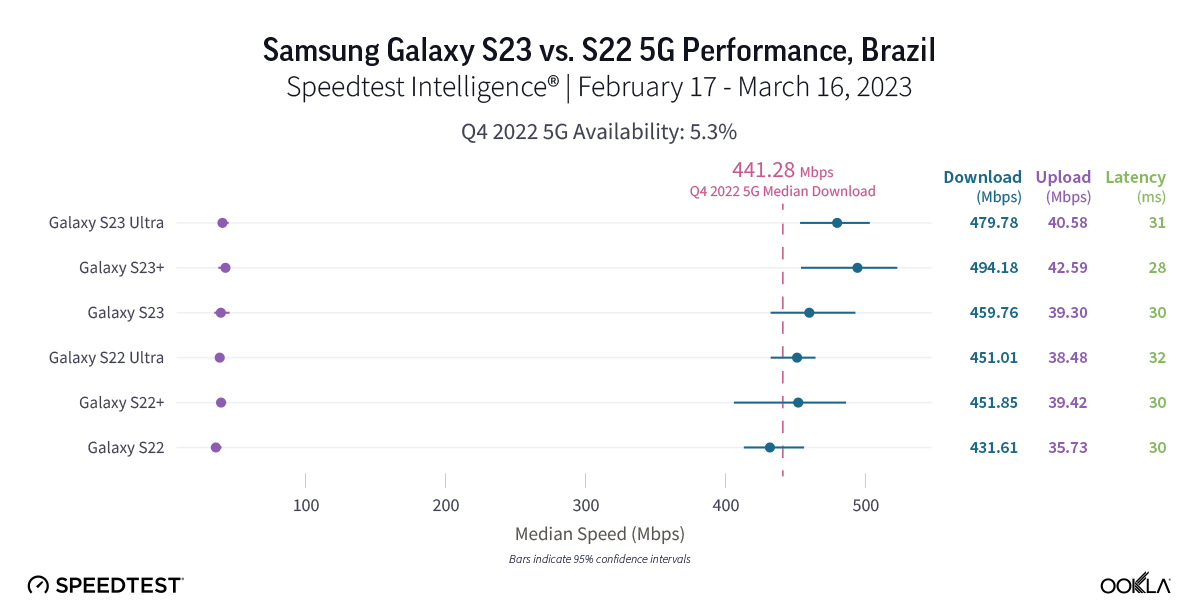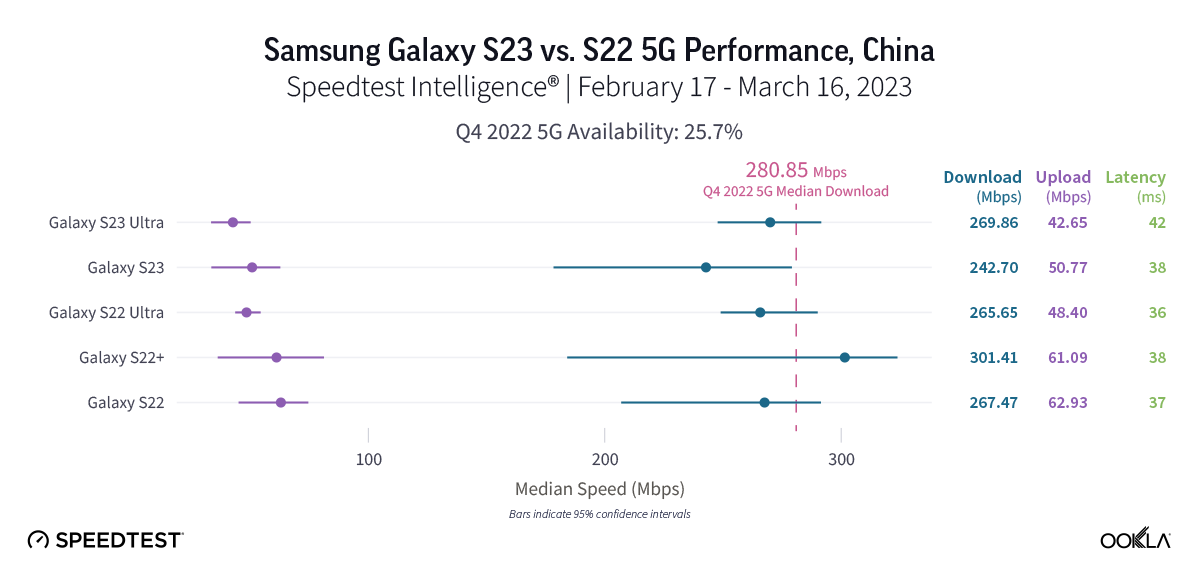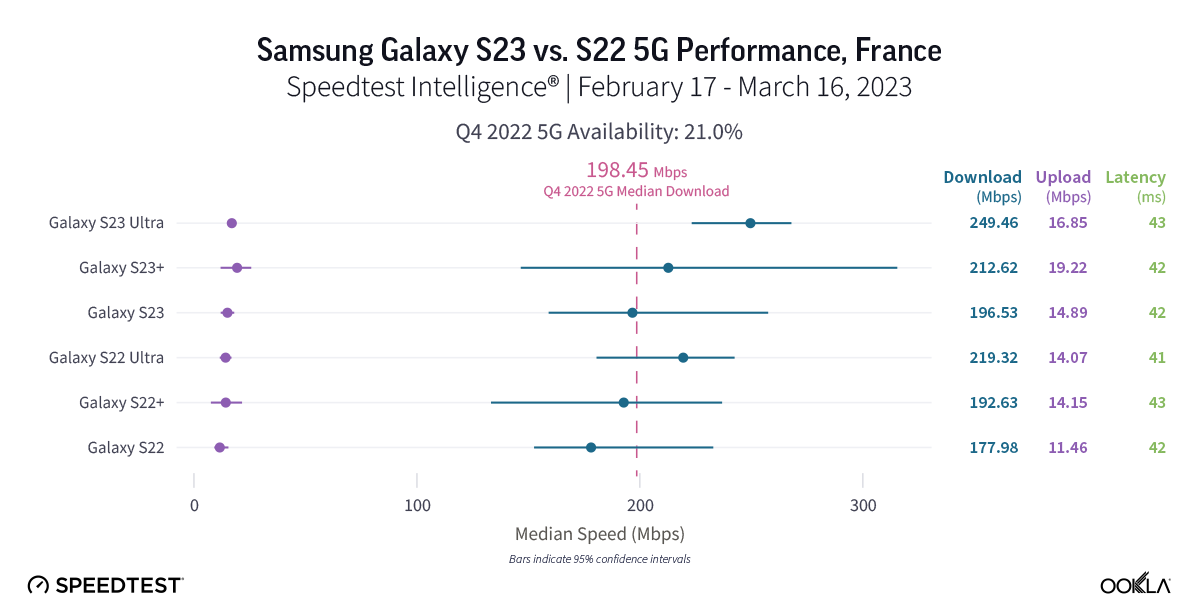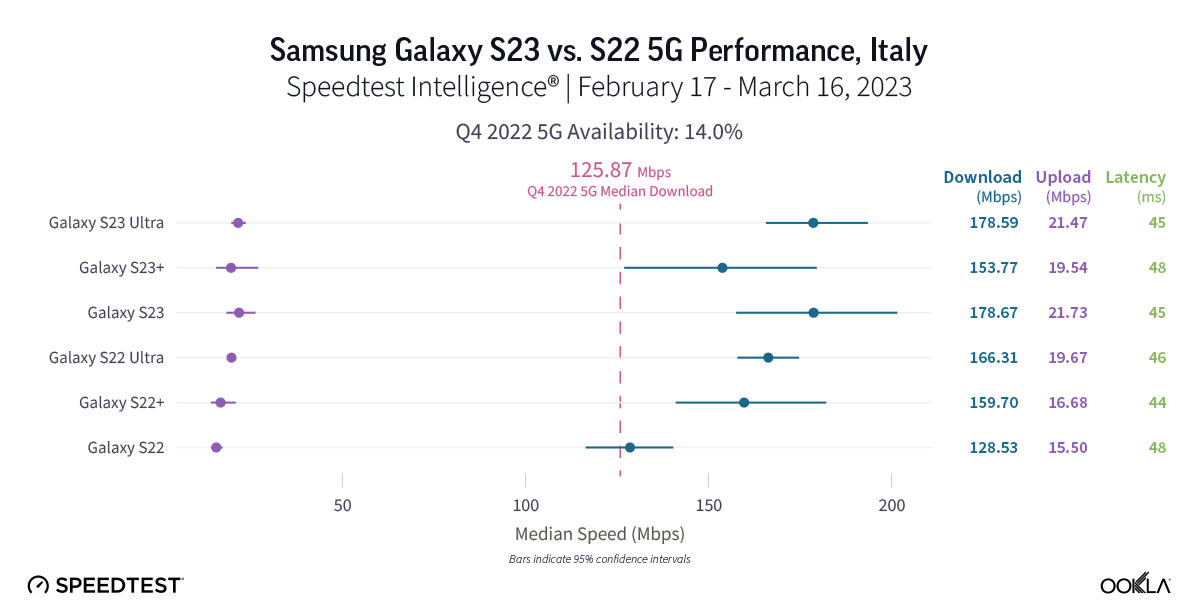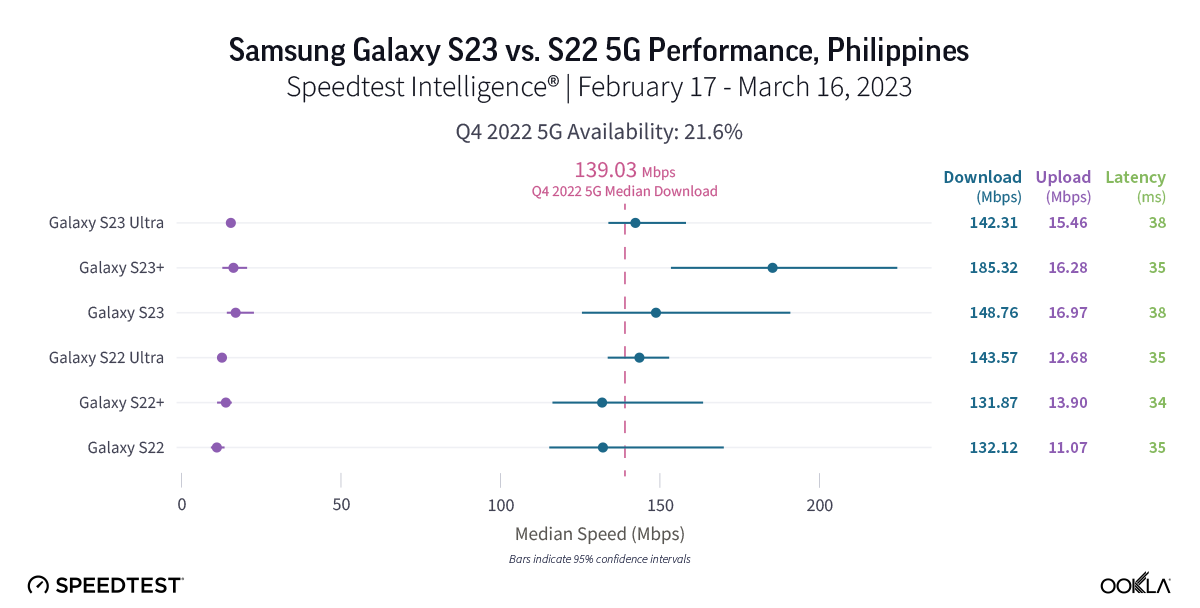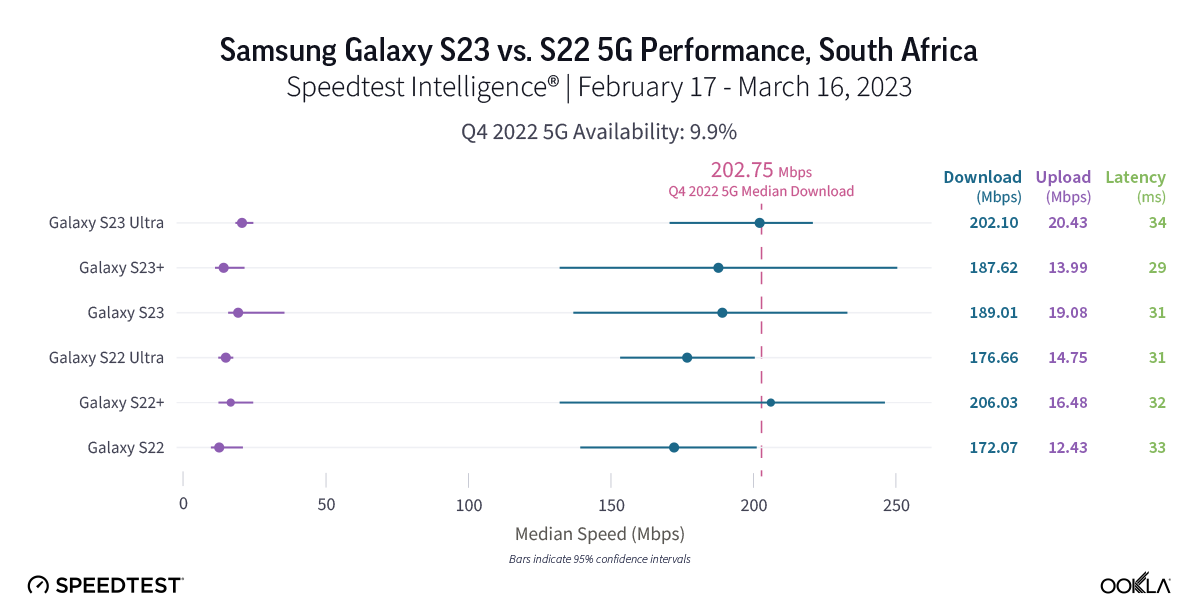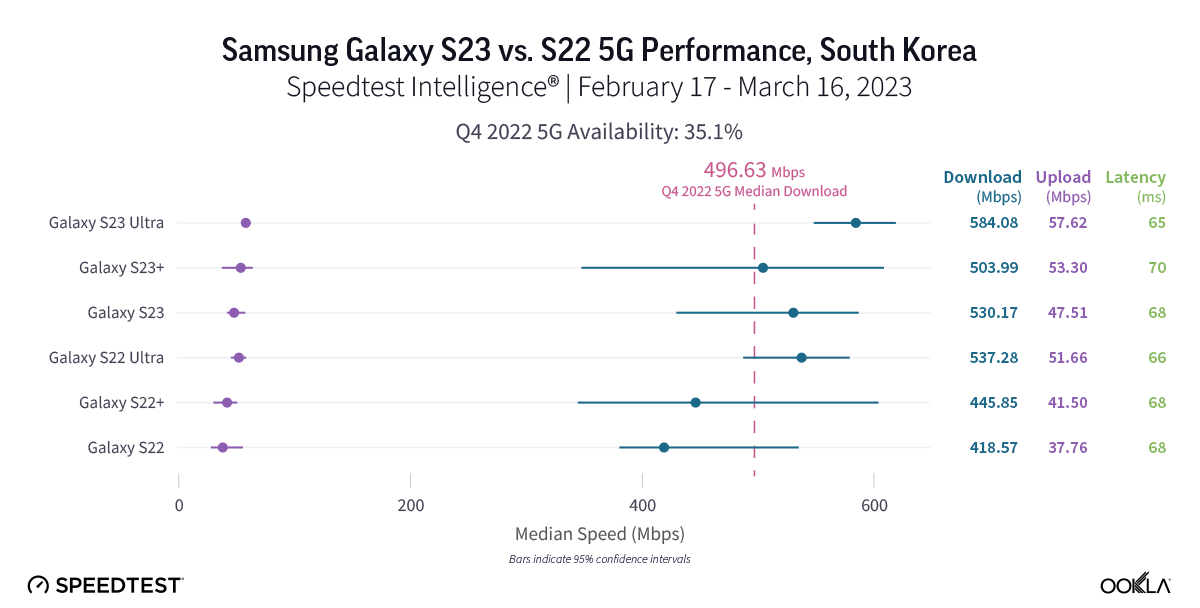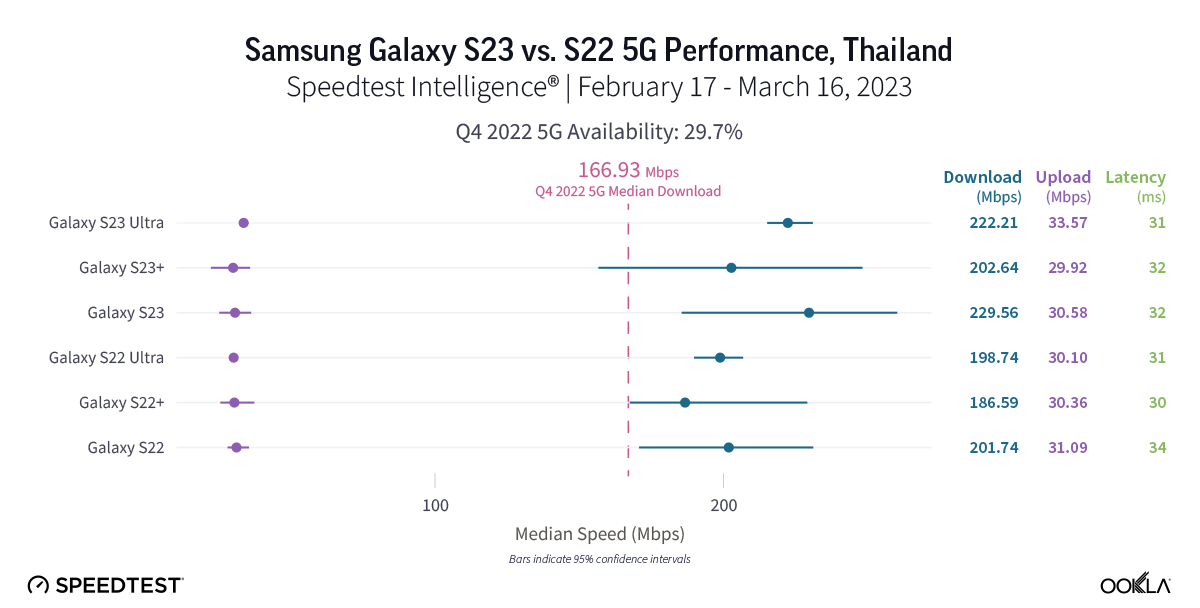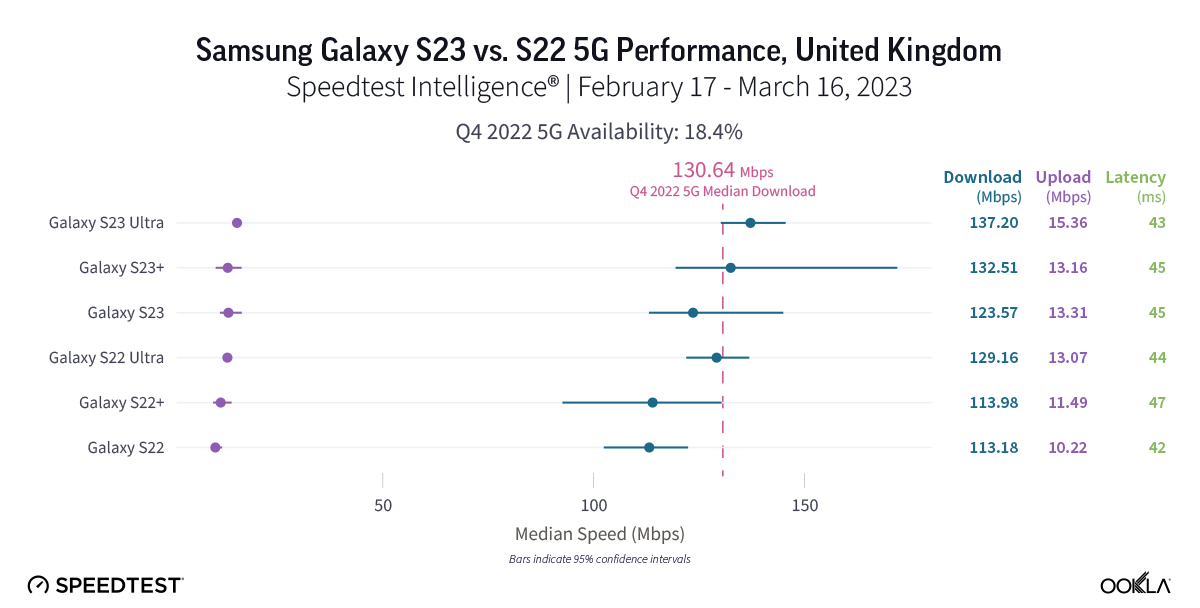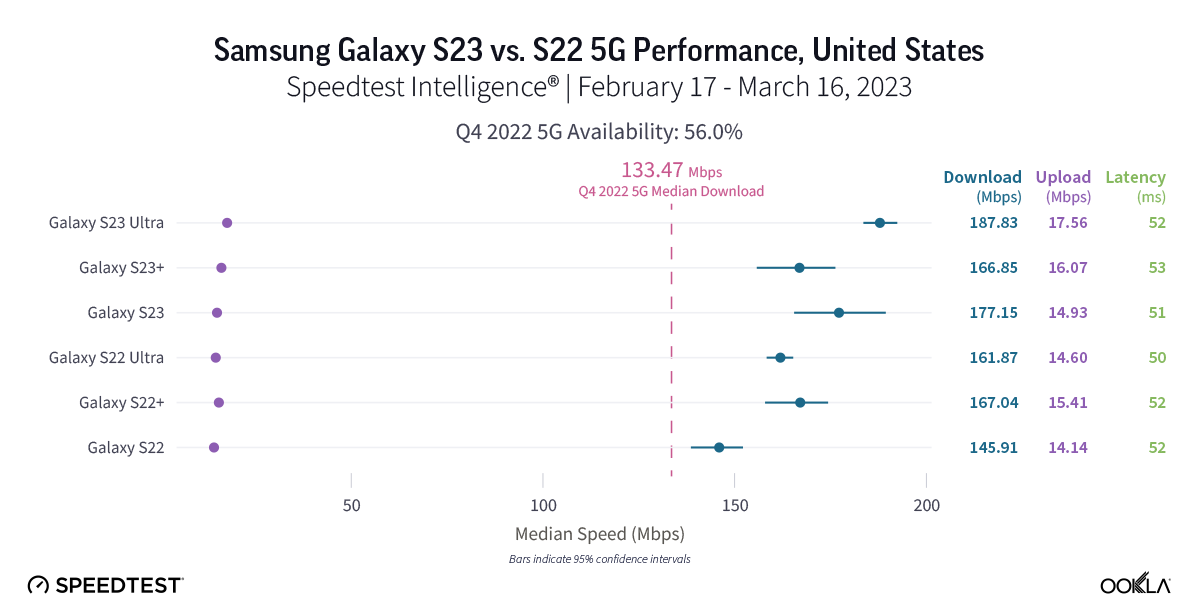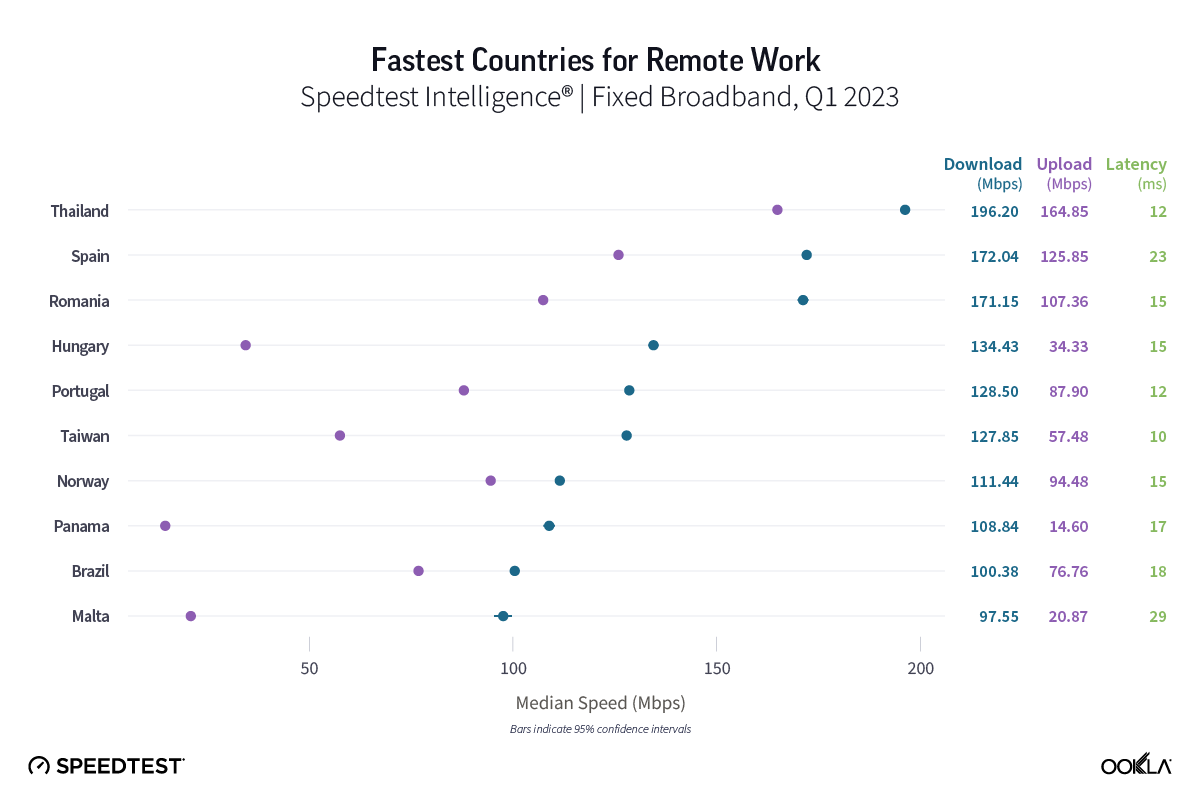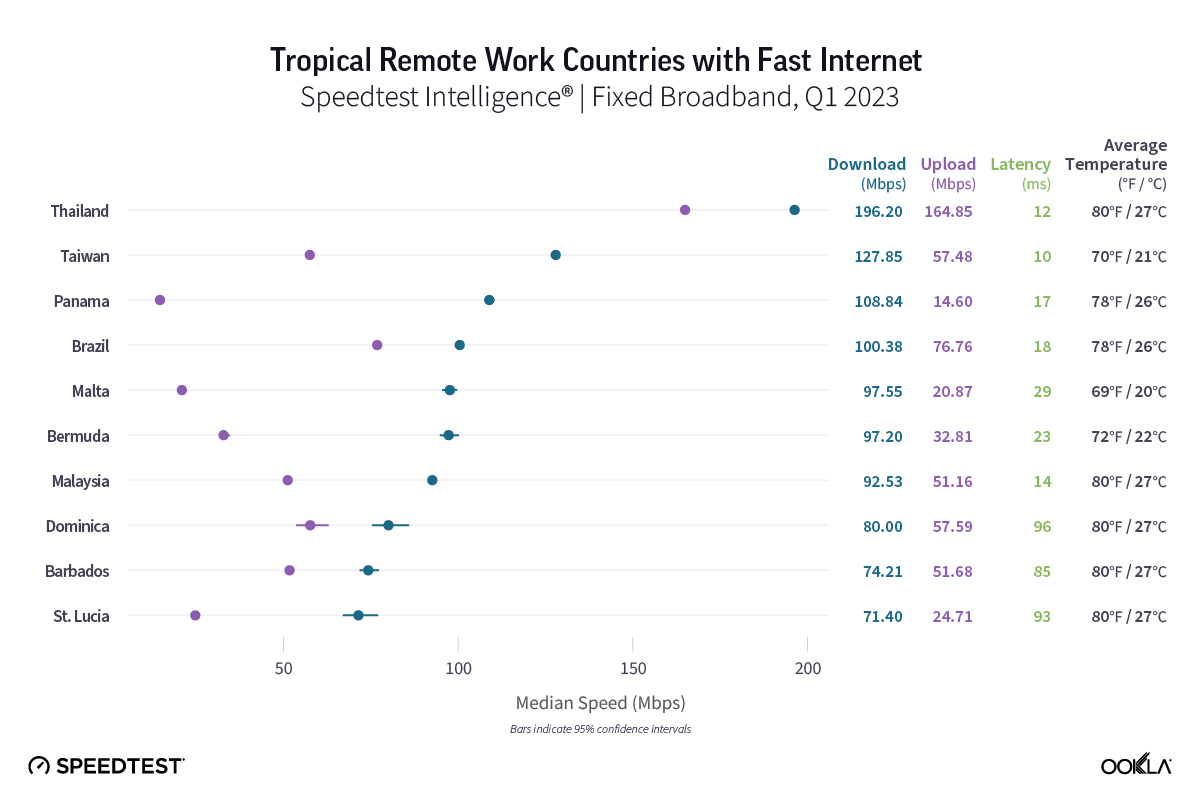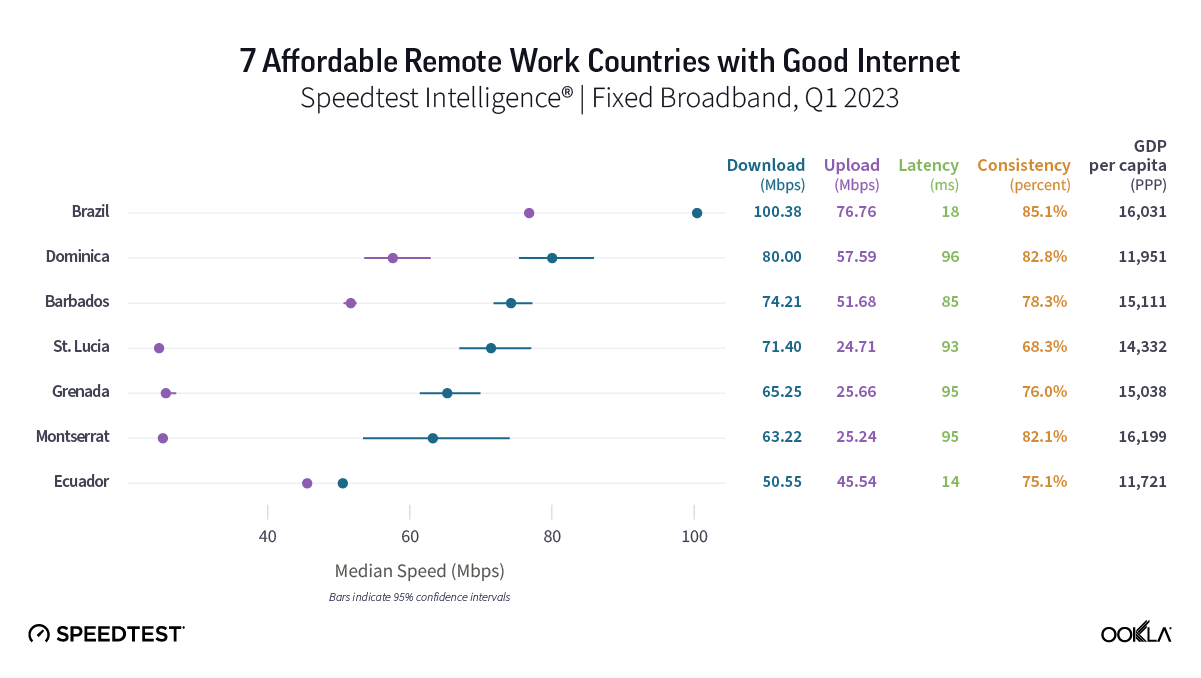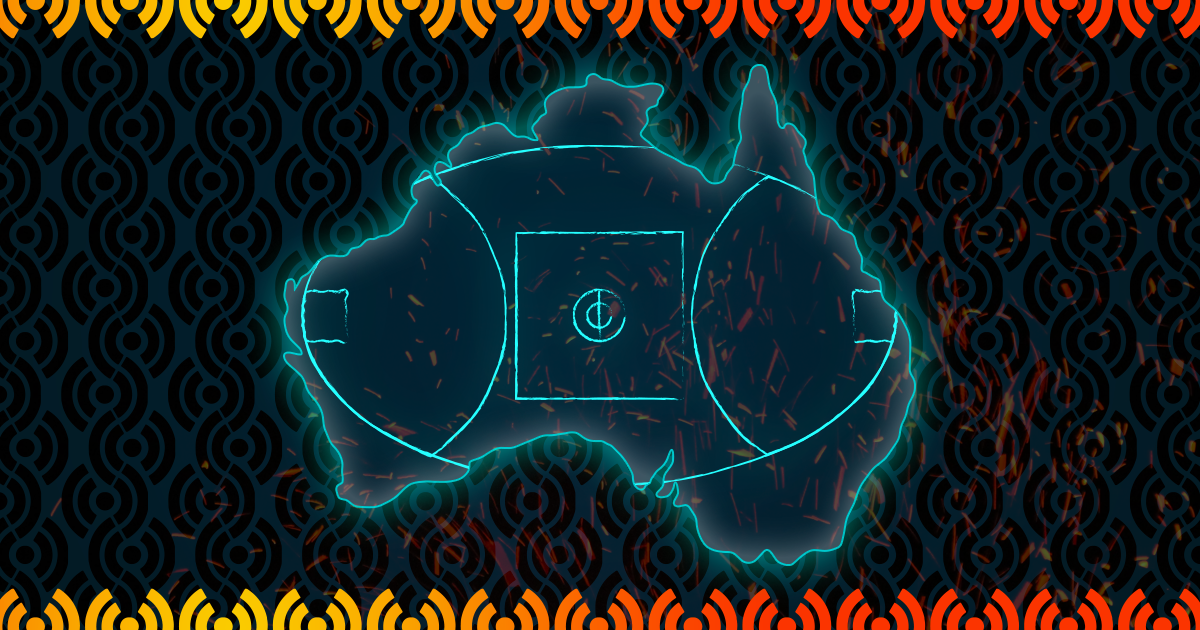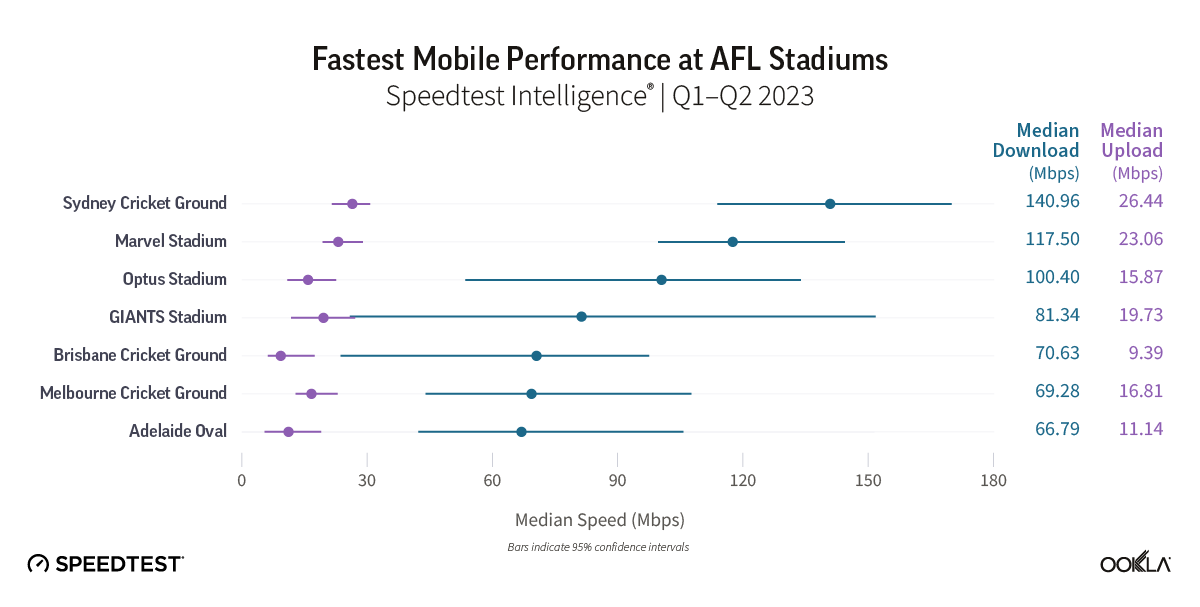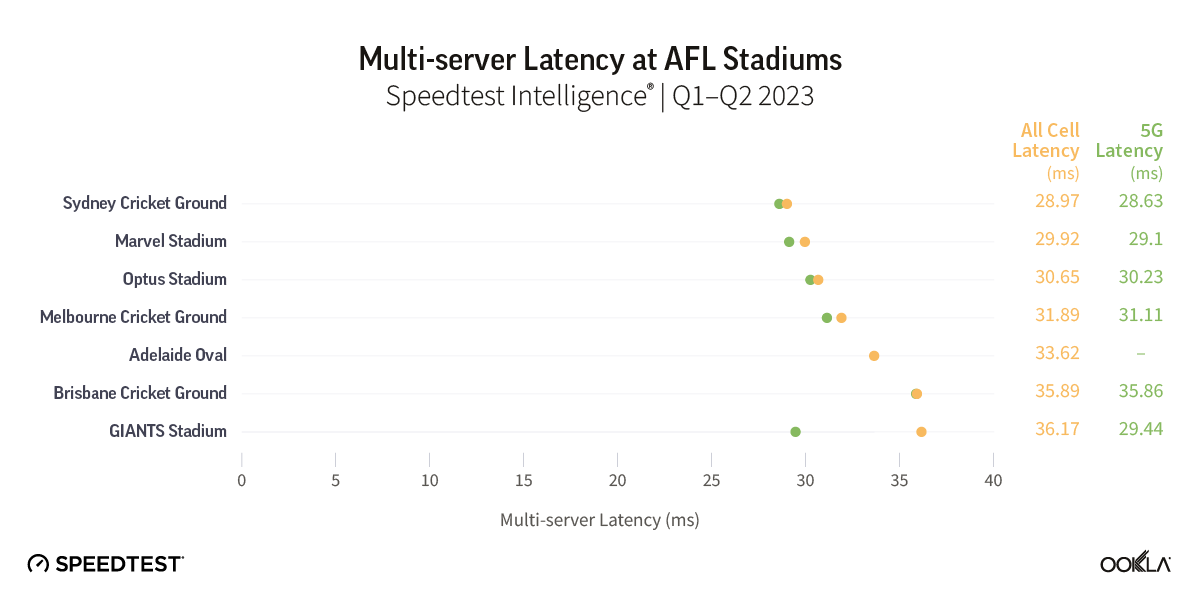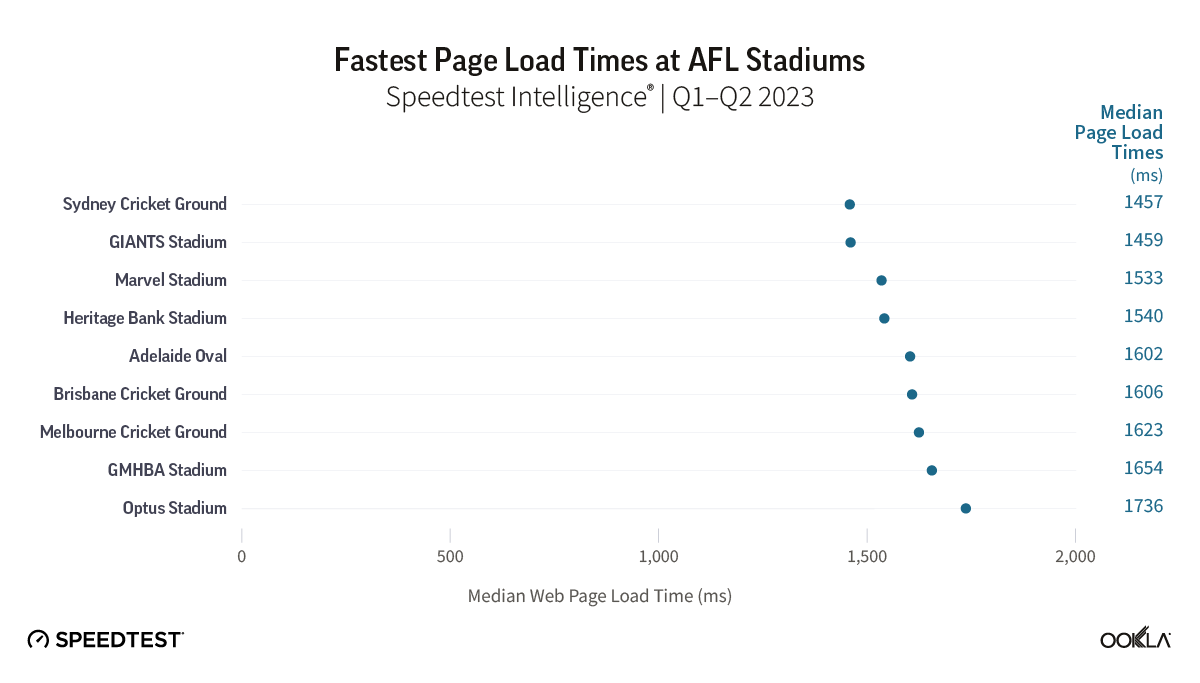The latest iPhone 16 family of smartphones launched on September 20, and with Black Friday approaching, many potential buyers are considering upgrading to a new iPhone model. But a key question remains: Is it worth it? To help answer that question, we’ve analyzed how the iPhone 16 family of devices measures up against its predecessors in terms of 5G speed and latency during its first several weeks on the market.
Looking at Speedtest® data from 11 select countries around the world from September 20 – October 20, 2024, we examined whether the iPhone 16 lineup — comprising the iPhone 16, 16 Plus, 16 Pro, and 16 Pro Max models — outpaced Apple’s earlier iPhone 14 and 15 families for 5G speed and latency performance. We’ve also compared the 5G speeds and latency of iPhone models with Samsung’s most recent offering, the Galaxy S24 family, including the S24, S24+, and S24 Ultra.
It’s important to note that device performance metrics can vary significantly from one country to another. Factors such as the performance of networks themselves in each country, government and mobile operator investments in 5G infrastructure, spectrum allocations, and the extent of 5G network deployment all contribute to speeds and variations across countries.
Key takeaways:
- The Apple iPhone 16 lineup showed a statistically significant lead for median 5G download speeds in five out of 11 countries in this study.
- At the slower end of the scale, the Apple iPhone 14 offered the slowest median 5G download speeds in 7 out of 11 countries. It’s worth noting, however, that speed differences between the devices were relatively minor in some of the countries analyzed (see the charts below for details).
- The Samsung Galaxy S24 family recorded the lowest (and, therefore, best) median 5G multi-server latency in 8 countries, whereas the iPhone 16 lineup led for 5G latency in one market.
- The Galaxy S24 family led on median 5G upload speeds in 8 of 11 countries, while iPhone 14 and 15 devices typically showed the slowest upload speeds.
To learn more about what speeds mean in real-world terms, check out our article looking at how much speed users need for a variety of daily mobile activities.
Take me straight to the data!
Asia Pacific | Europe | Latin America | North America
New chipsets and modems in the iPhone 16 lineup
When investing in an expensive new smartphone, consumers naturally want to know if the upgrade will be worth it. While the iPhone 16 lineup includes various new upgrades and features, let’s look at the components that impact connectivity performance, specifically the chipsets and modems across our study’s devices:
- iPhone 16 base model and 16 Plus use the Apple A18 system on a chip (SoC), while the Pro and Pro Max models feature the A18 Pro, with all iPhone 16 devices incorporating the Snapdragon X75 5G modem.
- iPhone 15 base models use the A16 Bionic chipset and Pro models run on the A17 Pro, and both are paired with the Snapdragon X70 5G modem
- iPhone 14 and 14 Plus models are equipped with an A15 chipset, and the iPhone 14 Pro and Pro Max feature the A16 Bionic chip. All iPhone 14 devices use a Snapdragon X65 5G modem
- Samsung Galaxy S24 devices also utilize the Snapdragon X75 5G modem
Do you own one of these devices? See how your speeds compare by taking a quick Speedtest!
Digging into the data: Where does the Apple iPhone 16 lead its earlier iPhone and Samsung counterparts around the world?
Early findings from Speedtest Intelligence® show that the latest iPhone 16 family outperformed its predecessors in terms of 5G performance across several of the markets we analyzed. While the performance differences between device families were minimal in some countries, iPhone 16 models demonstrated major speed advantages over previous generation Apple and Samsung devices in markets like Canada, France, Taiwan, and the United States.
Does that mean users in those locations should upgrade immediately? Not necessarily. The decision to upgrade depends on factors other than network performance, from price to new features and plenty of other things. However, our initial data on the 5G capabilities of the iPhone 16 series is encouraging in its early days of release.
Read on to see our complete analysis of all 11 countries in this study or select a region below to dig into more localized results.
Asia Pacific | Europe | Latin America | North America
Asia Pacific
iPhone 16 shows modest lead in 5G speeds in India
In India, all device families posted strong 5G results, with speeds ranging from 231.94 to 261.57 Mbps. The iPhone 16 lineup posted a median 5G download speed of 261.57 Mbps and the lowest median 5G multi-server latency at 44 ms. The Galaxy S24 family followed closely at 251.17 Mbps for downloads and claimed the top spot for 5G upload speeds at 19.69 Mbps. The iPhone 15 and 14 families trailed but still delivered solid speeds above 230 Mbps, with median 5G upload speeds of roughly 14 Mbps each.
Bottom line: Current iPhone 14 users might be tempted by the 30 Mbps advantage seen with the iPhone 16 lineup in this study. While 5G speeds were excellent across all device families in India, early adopters who want the latest and greatest might find the iPhone 16’s performance edge helps justify that upgrade itch.
Galaxy S24 family leads the Philippines for 5G speeds, while iPhone 16’s show modest advantage over previous iPhones
Speedtest Intelligence data revealed the Galaxy S24 family leading the Philippines market with a median 5G download speed of 158.47 Mbps and the lowest median 5G multi-server latency at 32 ms. The iPhone 16 lineup showed relatively minor improvement over its predecessors, posting a median 5G download speed of 125.68 Mbps, a tick above the iPhone 15 and 14 families (both registered speeds of about 120 Mbps).
Bottom line: While the iPhone 16 showed slight improvements over previous iPhone generations, the Galaxy S24 family offered the strongest 5G performance in the Philippines, with a roughly 33 Mbps advantage in 5G download speeds.
iPhone 16 lineup leads Taiwan for 5G speed, with impressive performance across all devices
5G speeds were excellent across the board in Taiwan, with median 5G download speeds ranging from 287.83 to 342.37 Mbps. The iPhone 16 lineup led the market with a median 5G download speed of 342.37 Mbps. The Galaxy S24 family followed at 313.96 Mbps and matched the iPhone 16’s 5G upload performance at around 38 Mbps. The iPhone 15 and 14 families trailed the 16 lineup but still impressed with speeds above 287 Mbps.
Bottom line: The iPhone 16 lineup led Taiwan’s impressive 5G speed landscape by roughly 30 Mbps. However, with all device families delivering median 5G download speeds of at least 287 Mbps, users should experience excellent 5G performance regardless of which phone they choose, making the decision to upgrade a bit tricky and potentially more about the new model’s features than about speed.
Europe
For users in Belgium, the iPhone 16 is worth a look
Speeds in Belgium were strong across the board, with the iPhone 16 lineup clocking a median 5G download speed of 237.37 Mbps. The iPhone 14 and 15 lineups trailed, posting median 5G download speeds of a little over 170 Mbps each. Latency was also impressive in general, with all four device families registering median 5G multi-server latency of 40 ms or better.
Bottom line: The iPhone 16 family’s current speed advantages over its predecessors in Belgium suggest an upgrade might be worth considering for users focused on 5G performance. That said, all devices in the market delivered good speeds that should provide users with quick downloads and strong connectivity overall.
Upgrading to an iPhone 16 may be appealing for France users
In France, the iPhone 16 lineup led the way for 5G speed with a median 5G download speed of 279.29 Mbps, offering a speed advantage of nearly 60 Mbps compared to older iPhones. The Galaxy S24 family placed second at 242.34 Mbps and posted the lowest median 5G multi-server latency at 38 ms.
Bottom line: With the iPhone 16 lineup clocking 5G download speeds significantly faster than both previous iPhone generations and the latest Samsung devices, users seeking faster speeds may want to consider a new iPhone.
German users could see 5G speed gains with an iPhone 16
The iPhone 16 lineup led the pack in Germany with a median 5G download speed of 172.69 Mbps, more than 40 Mbps faster than iPhone 14 and 15 models, which delivered speeds of roughly 130 Mbps each. Meanwhile, the Galaxy S24 series trailed in download speed, but it registered the lowest median 5G multi-server latency in the market at 34 ms.
Bottom line: If you’re using an older iPhone in Germany, the iPhone 16’s speed advantage over previous models – and Galaxy S24 devices – could make it an appealing upgrade option.
Latin America
No compelling reason to upgrade just yet in Brazil
All devices in our study showed outstanding 5G speeds in Brazil, with speeds ranging from the iPhone 14’s median 5G download speed of 444.29 Mbps to the Galaxy S24’s 482.95 Mbps. The iPhone 16 and 15 families posted similar speeds of 468.11 Mbps and 465.75 Mbps, respectively.
Bottom line: Brazil was home to the fastest 5G speed on an iPhone in our 11-country study, with even the “slowest” speed in the market outpacing the top performers in other markets by over 100 Mbps. With all device lineups performing exceptionally well, the decision to upgrade in Brazil might come down to features rather than speed.
Galaxy S24 outpaces the iPhone 16 lineup for 5G speed in Colombia
The Samsung Galaxy S24 family had a performance edge in Colombia, with its median 5G download speed of 246.05 Mbps coming in about 50 Mbps faster than its iPhone competitors. Its median 5G upload speed of 35.66 Mbps also led the market. All three iPhone lineups posted median 5G download speeds ranging from 181.27 Mbps to 195.25 Mbps.
Bottom line: The Galaxy S24 series led for 5G performance in Colombia, but when deciding whether to get a new device, raw speed isn’t always everything. Apple enthusiasts might consider the iPhone 16’s complete feature set and strong 5G speeds (even though they trailed those of the Galaxy S24 family), while current S24 users in Colombia will likely stand pat with the knowledge that their devices offer strong 5G performance in the market.
North America
iPhone 16 lineup in Canada faster than its predecessors
The iPhone 16 lineup showcased strong performance in Canada with a median 5G download speed of 182.43 Mbps, about 45 Mbps faster than those of earlier iPhone models. The Galaxy S24 family placed second at 155.61 Mbps and achieved the lowest median 5G multi-server latency at 34 ms, while iPhone 14 and 15 models trailed with still-strong speeds of 124.64 Mbps and 137.54 Mbps, respectively.
Bottom line: For Canadians looking for top-notch 5G performance, the iPhone 16 lineup makes a strong case with its lead in speed over older iPhone models. While all device families in Canada delivered good 5G speeds, for users who want both top performance and the latest features, the iPhone 16’s speed advantage might help justify that upgrade you’ve been considering.
No clear speed advantage in Mexico for the new iPhone 16
The latest iPhone devices showed remarkably close 5G speeds in Mexico, with speeds varying by just a few megabits per second across the different iPhone families. While the iPhone 14 family had a median 5G download speed of 191.31 Mbps, the iPhone 15 and 16 lineups performed similarly well, clocking in at 185.88 Mbps and 185.79 Mbps, respectively. The Galaxy S24 family followed at 173.70 Mbps.
Bottom line: Users in Mexico considering an iPhone upgrade might want to weigh factors beyond 5G performance, as our data shows minimal speed differences between recent iPhone generations. The choice to upgrade likely depends more on desired features and other device capabilities than network performance alone.
iPhone 16 offers a strong choice in the United States
In the United States, our results showed the iPhone 16 lineup reaching a median 5G download speed of 324.23 Mbps, well ahead of both the Galaxy S24 family at 287.35 Mbps and older iPhones at 244.48 Mbps (iPhone 15) and 220.76 Mbps (iPhone 14). All device families provided solid latency performance below 53 ms.
Bottom line: While all devices in our study provided good speeds in the U.S., the iPhone 16’s standout performance is hard to ignore and makes a strong case for upgrading, particularly for users seeking the fastest 5G.
Ookla will continue monitoring how devices are performing
We’ll continue to check in on device performance as new models enter the market, so stay tuned for further insights into mobile and fixed broadband performance in countries around the world.
If you’ve recently made the switch to a new iPhone, make sure you’re getting the speeds you need (and pay for) by downloading the Speedtest app for iOS or Android.
Ookla retains ownership of this article including all of the intellectual property rights, data, content graphs and analysis. This article may not be quoted, reproduced, distributed or published for any commercial purpose without prior consent. Members of the press and others using the findings in this article for non-commercial purposes are welcome to publicly share and link to report information with attribution to Ookla.
